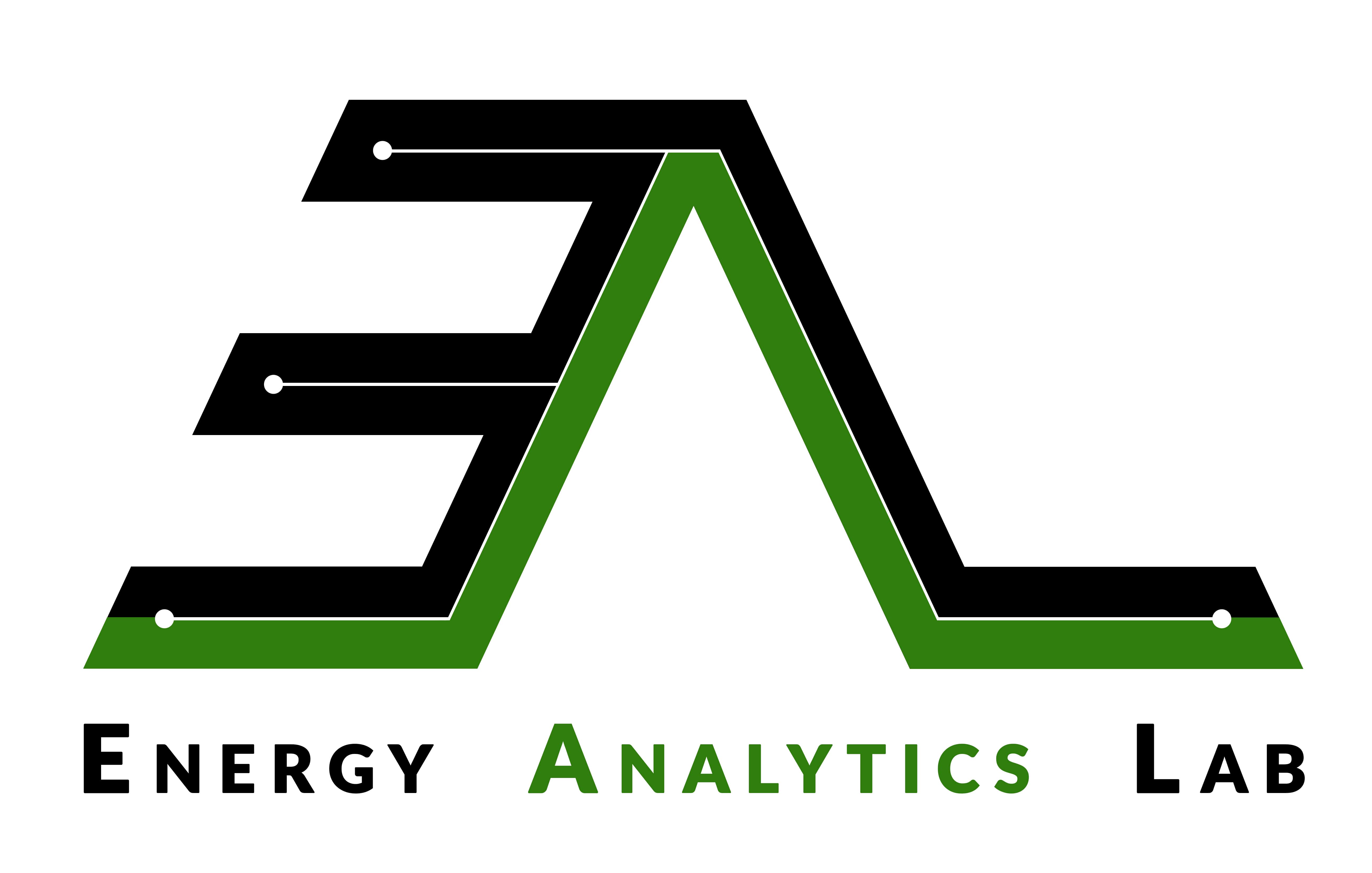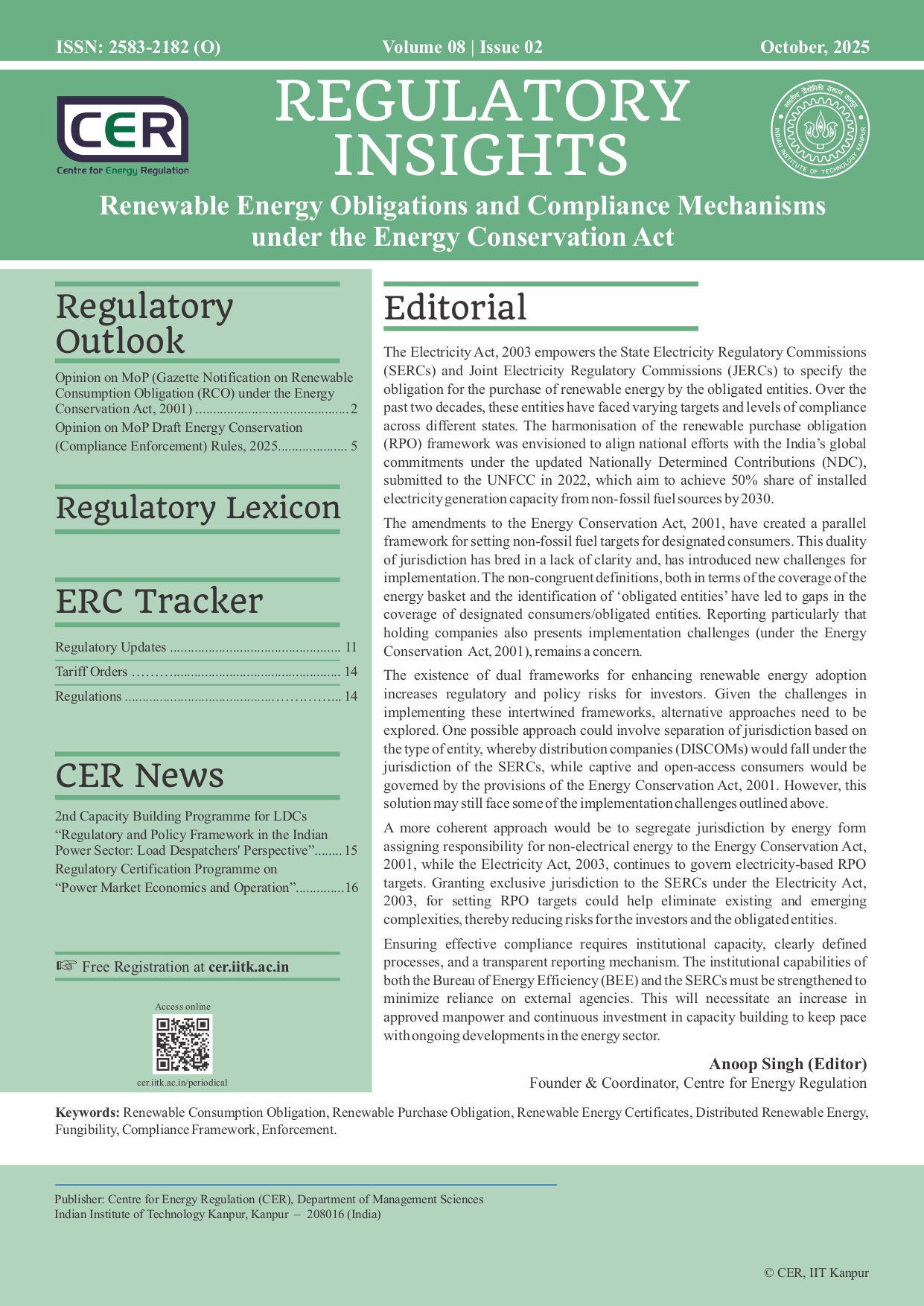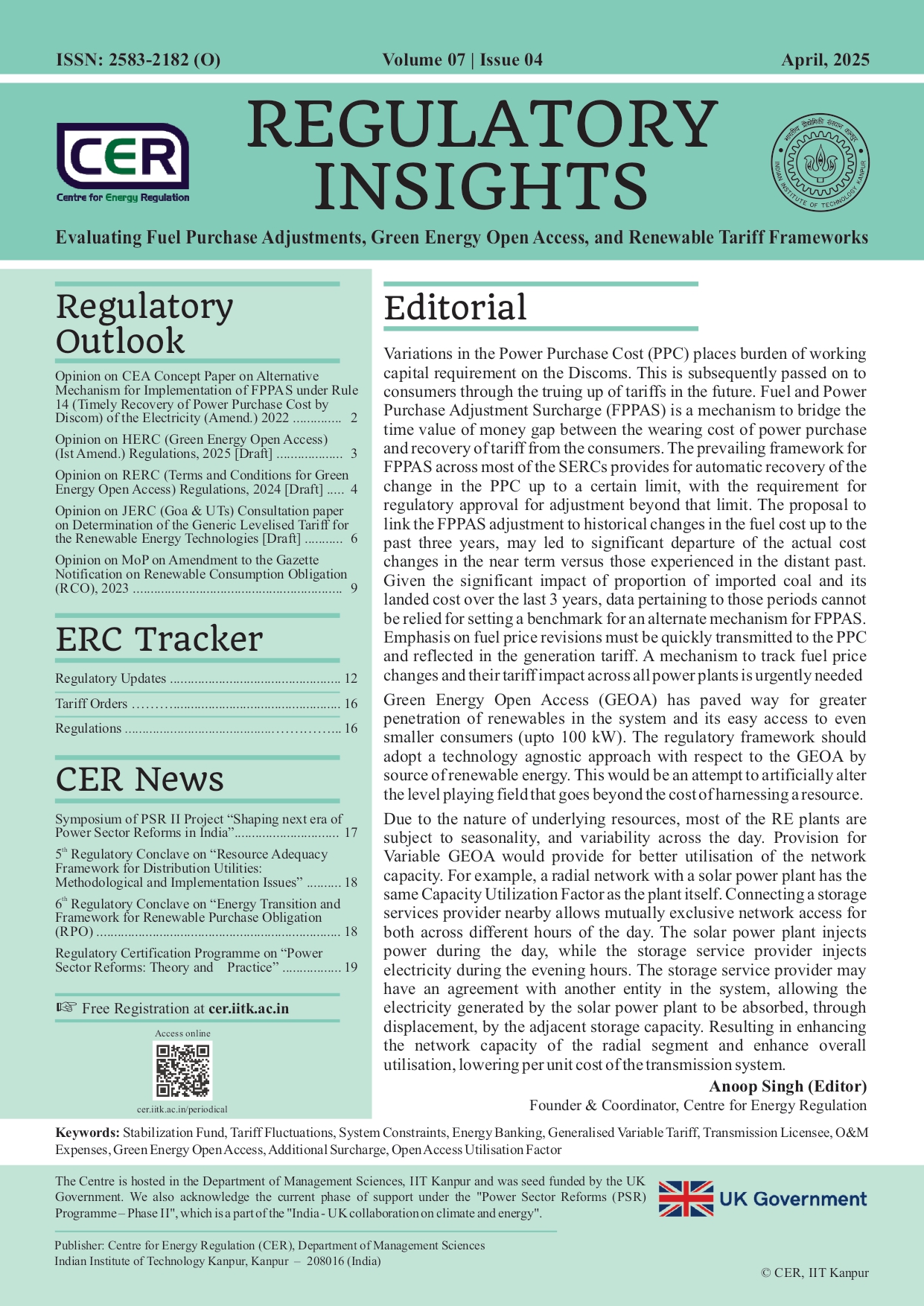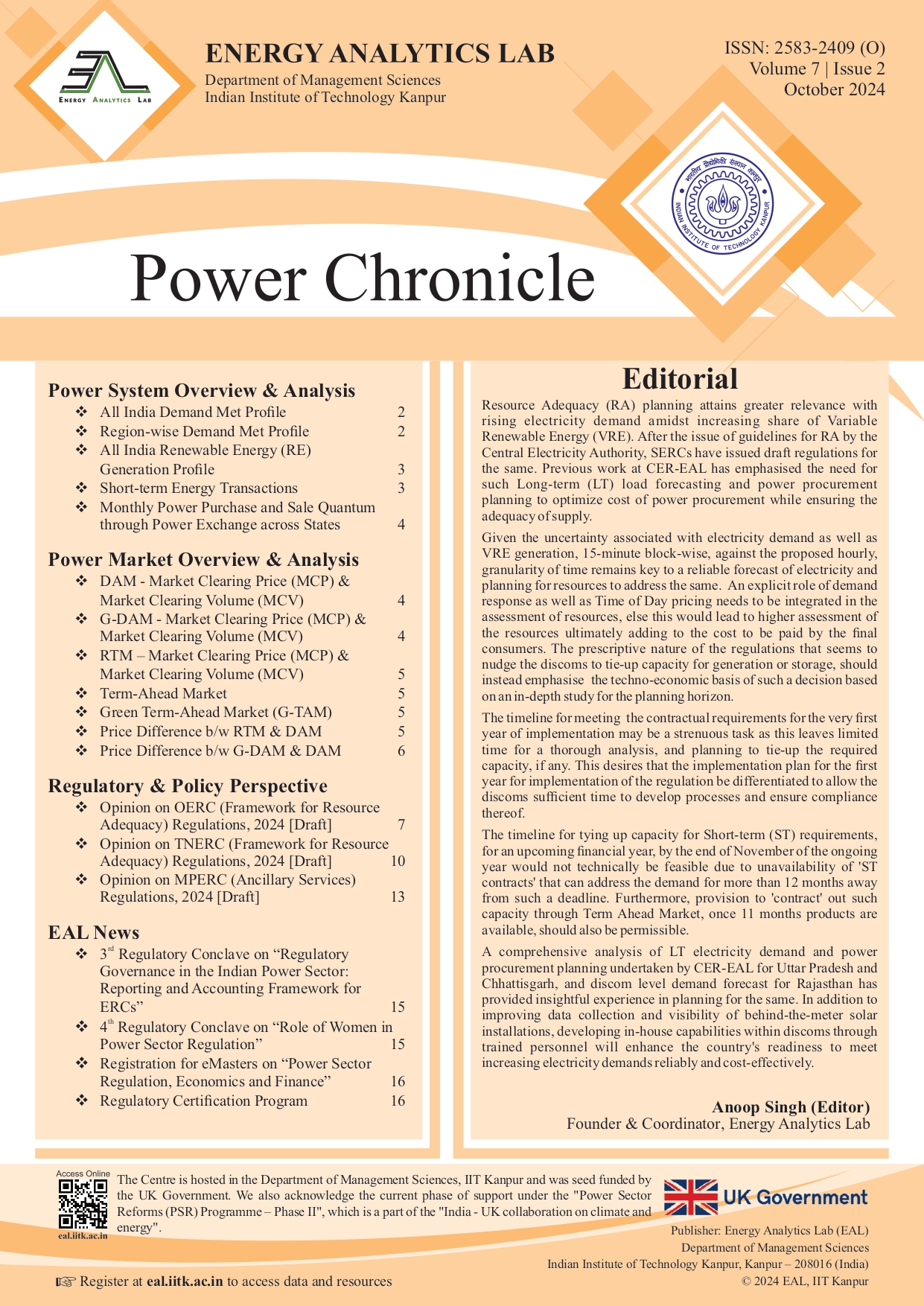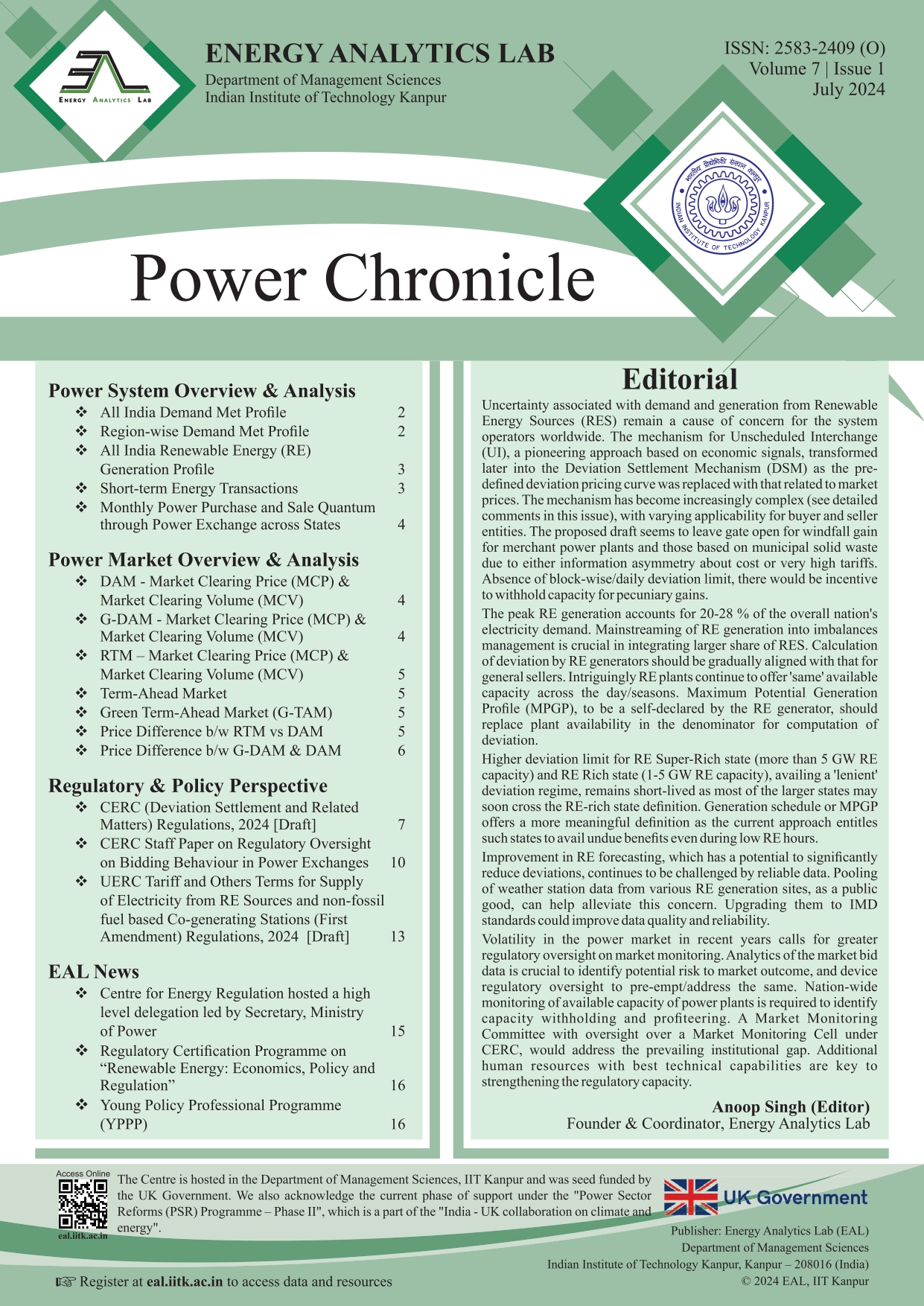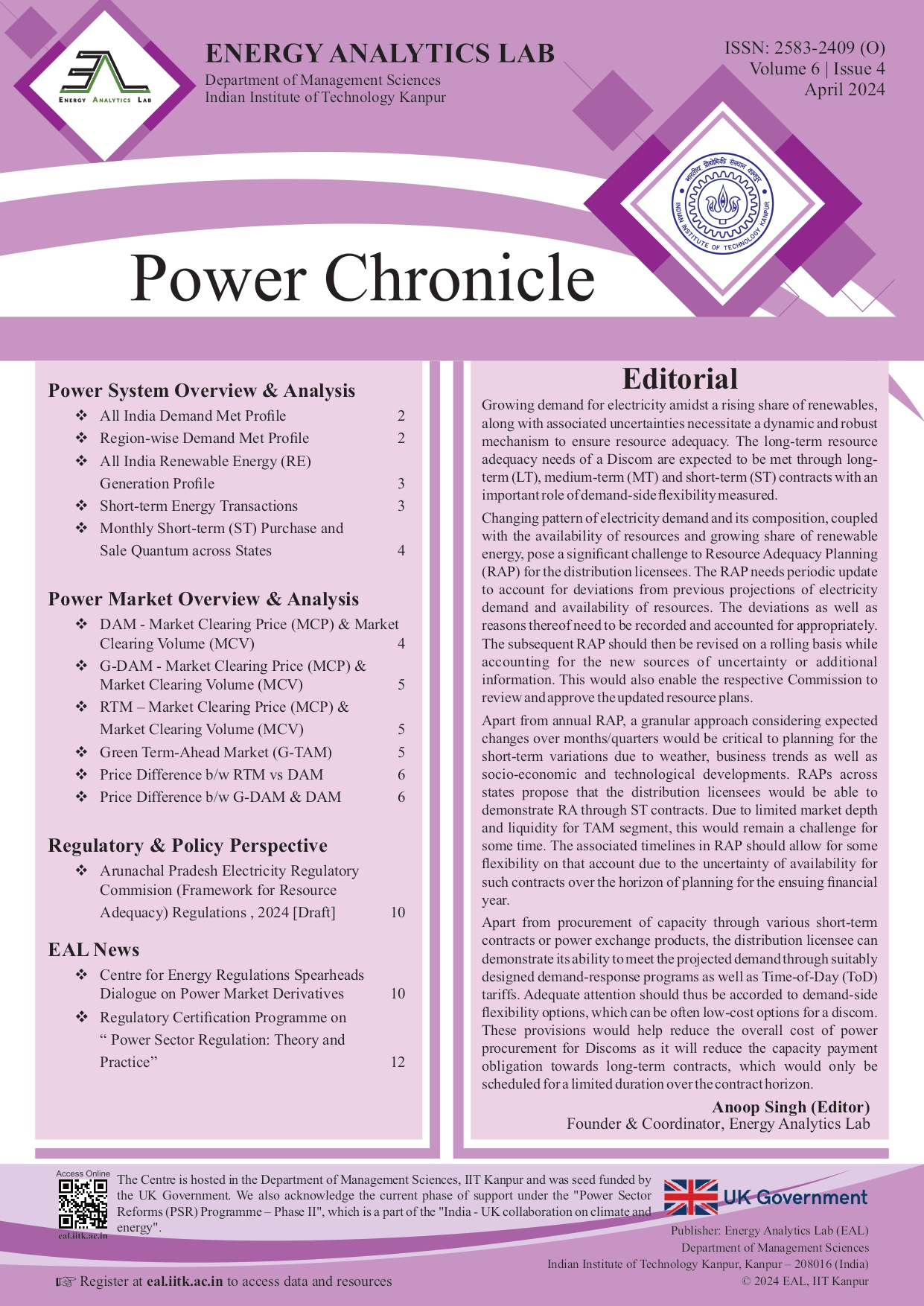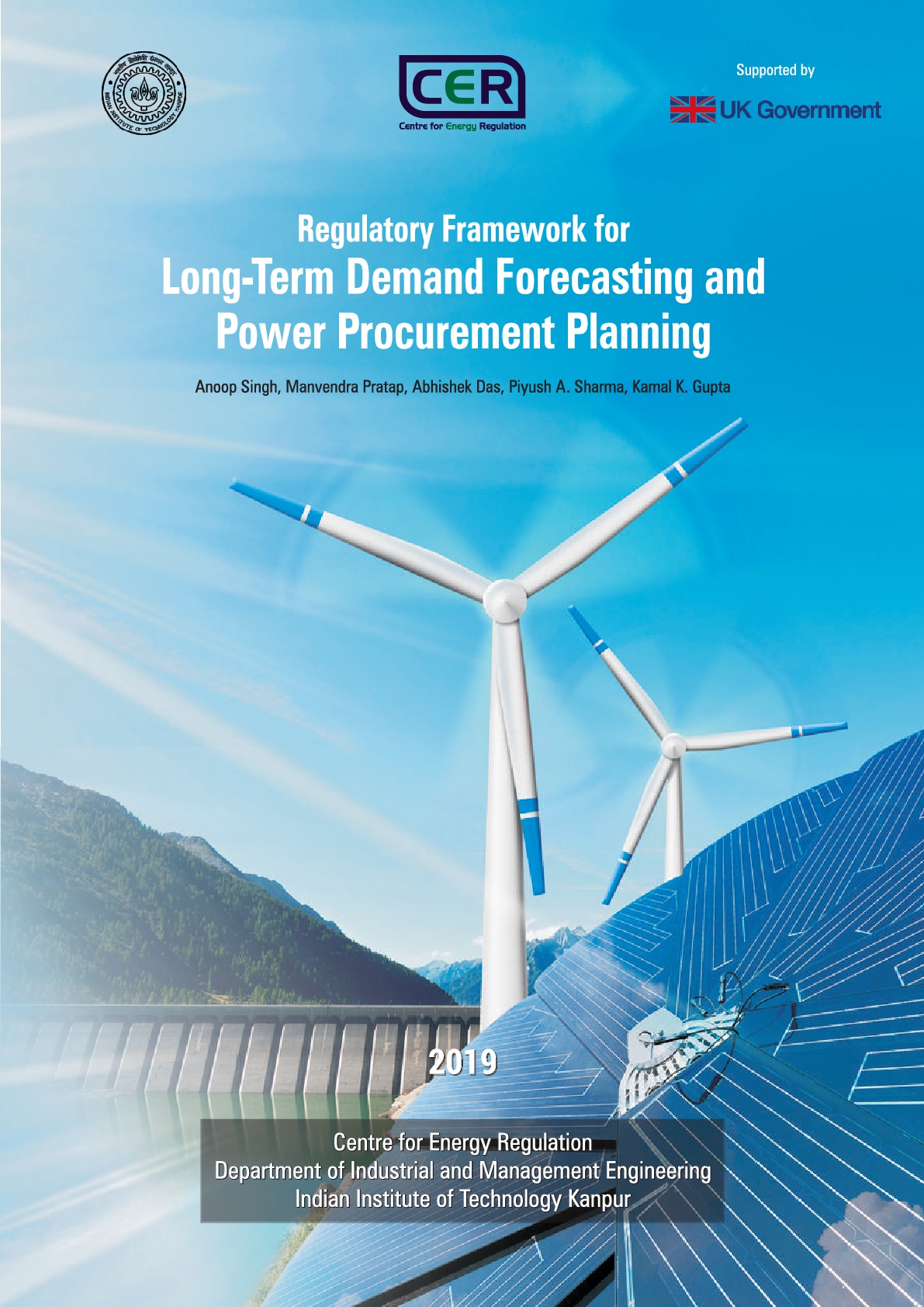Regulatory Blog
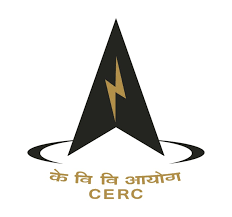 ?>
?>
CERC (Power Market) (First Amendment) Regulations, 2025
 ?>
?>
HPERC (Deviation Settlement Mechanism and Related Matters) (Second Amendment) Regulations, 2025 [Draft]
 ?>
?>
IEX Petition (Introduction of the Peak Day Ahead Market (Peak DAM) and Peak Real Time Market (Peak RTM) at Indian Energy Exchange Limited

Renewable Consumption Obligation (RCO) Under the Energy Conservation Act, 2001
CER Opinion:ô

Energy Conservation (Compliance Enforcement) Rules, 2025
 ?>
?>
CEA: ãAlternative Mechanism for implementation of FPPAS under of the Electricity (Amendment) Rules, 2022.ã
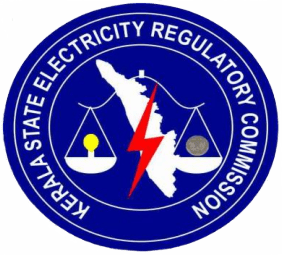 ?>
?>
KSERC (Renewable Energy and Related Matters) Regulations 2025
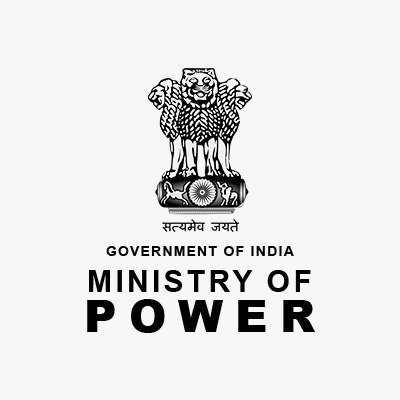 ?>
?>
Amendments to the Guidelines for Tariff Based Competitive Bidding Process for Procurement of Power from Grid Connected Wind Solar Hybrid Project, 2025
 ?>
?>
CERC (Virtual Power Purchase Agreements (VPPAs)) Guidelines, 2025

Ministry of Coal (Public Consultation on Coal Trade Exchange)

Draft amendments proposed in the MBDs for Procurement of Power for Long term from Thermal Power Stations set up on DBFOO basis -Reg.
 ?>
?>
TNERC (Renewable Energy Purchase Obligation) (Amendment) Regulation, 2025
 ?>
?>
CERC: Indian Energy Exchange petition before Commission on introduction of Green Real Time Market segment on its trading platform
 ?>
?>
Gazette Notification on Renewable Consumption Obligation (RCO) notified on 20th Oct 2023, 2025
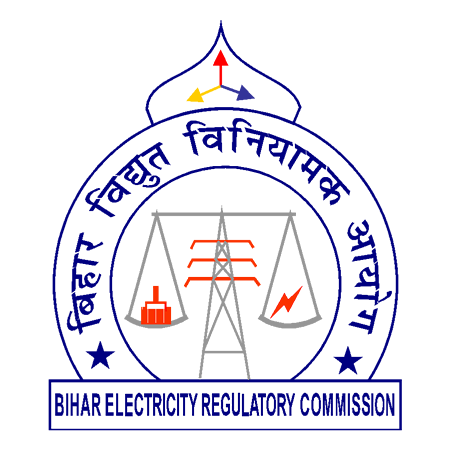 ?>
?>
BERC (Renewable Purchase Obligation, its compliance and REC Framework Implementation) Regulations
 ?>
?>
HERC (Green Energy Open Access) Regulations, 2023 1st Amendment Regulations, 2025 [Draft]
 ?>
?>
Alternative Mechanism for implementation of FPPAS under of the Electricity (Amendment) Rules, 2022
 ?>
?>
RERC (Terms and Conditions for Green Energy Open Access) Regulations, 2024 [Draft]
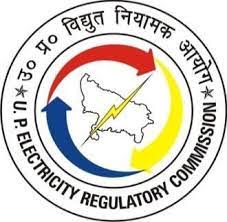 ?>
?>
UPERC ãMYT for Distribution and Transmission Tariffã (Third Amendment) Regulations, 2024 [Draft]

Draft Procedure for Mechanism of Compensation for Degradation of Heat Rate, Auxiliary Consumption, and Secondary Fuel Oil Consumption Due to Part Load Operation and Multiple Start/Stop of Units

Draft Regulation on Framework for Resource Adequacy
 ?>
?>
CERC (Terms and Conditions for Purchase and Sale of Carbon Credit Certificates) Regulations, 2024 [Draft]
 ?>
?>
CEA Draft discussion paper on ãMethodology for Capacity Credit of Generation Resources & Coincident Peak Requirement of Utilities under Resource Adequacy Frameworkã
 ?>
?>
Terms and Conditions for Determination of Generation Tariff Regulations, 2024 [Draft]
 ?>
?>
AERC (Demand Response) Regulations, 2024 [Draft]
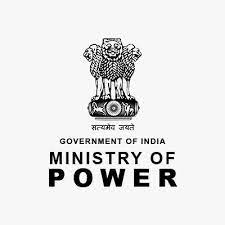 ?>
?>
MoP (Tariff based competitive bidding guidelines for procurement of storage capacity/stored energy from Pumped Storage Plants), 2024 [Draft]
 ?>
?>
CERC (Terms and Conditions of Tariff) (First Amendment) Regulations, 2024. [Draft]
 ?>
?>
OERC - Regulation on Procurement of Energy from Renewable Sources and its Compliance Regulations, 2024 [Draft]
 ?>
?>
OERC - Regulation on Framework for Resource Adequacy [Draft]
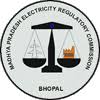 ?>
?>
MPERC "Ancillary Services" Regulations, 2024 [Draft]
 ?>
?>
CERC: Staff Paper on Regulatory Oversight on Bidding Behaviour in Power Exchanges
The Central Electricity Regulatory Commission (CERC) staff has prepared a Staff Paper on Regulatory Oversight on Bidding Behaviour in Power Exchanges, which discusses the regulatory framework and pricing methodology in Indian Power Exchanges. The paper, dated May 2024, is not binding on the Commission and aims to initiate discussions on regulatory oversight and solicit inputs from stakeholders.
The paper reviews the CERC Pricing Staff Paper from October 2022, which raised questions about the pricing methodology, criteria for regulatory interventions, the impact of price caps, and market design for incentivizing demand response and energy storage systems. Stakeholders' comments on the pricing paper suggested continuing with the Uniform Market Clearing Price (UMCP) mechanism and other measures like using UMCP for normal Day-ahead Market (DAM) and Pay-as-Bid (PAB) for residual bids.
The paper highlights issues with the UMCP mechanism, such as high prices during supply shortages or high demand, and the need for regulatory intervention to ensure market participants' faith. The Commission has directed its staff to propose measures for predictable market intervention.
The price discovery mechanism in collective transactions is based on a double-sided closed bid auction, with the UMCP adopting the principle of maximizing economic surplus. However, high prices in the market indicate the need for new investments, and there have been concerns about the frequency of price caps being hit, suggesting a need for measures to check infra-marginal sellers and reduce MCP volatility.
CER Opinion -
Market Monitoring Framework (MMF): The evolutionary journey of the Indian power market has so far had limited regulatory oversight in terms of market monitoring. The Market Monitoring Report (MMR), published by the Central Electricity Regulatory Commission (CERC), is a market reporting exercise that is published with a significant lag. While it is a useful compendium of the market outcome and broad market power indices, there is an urgent need to set up a robust Market Monitoring Framework (MMF) with continuous monitoring of the market outcome as well as bidding and operational behaviour of the power system constituents. This should provide for timely analysis of bids on daily, weekly as well as monthly basis with clear set rules for identifying divergent market outcome and suspiciousô Participant behaviour for further analysis. A summarized report of such daily, weekly and monthly analysis should become an integral part of the MMR published by the CERC.ô The MMF should ensure compliance with timely data disclosure by the power exchanges, trading Licensees, generators, Discoms, open access consumers as per a template /format to be developed for the same. Such data compliance report should form an integral part of the MMR.
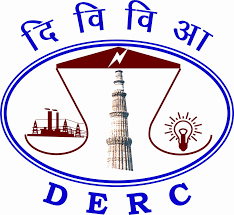 ?>
?>
DERC (Terms and Conditions for Green Energy Open Access) Regulations, 2024. [Draft]
 ?>
?>
DERC (Renewable Purchase Obligation and RE Certificate Framework Implementation) Regulations, 2024
 ?>
?>
TNERC: TNERC (Framework for Resource Adequacy) Regulations, 2024 [Draft]
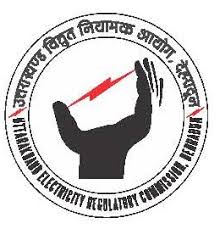 ?>
?>
UERC Terms and Conditions for Determination of Multi Year Tariff Regulations, 2024 [Draft]
 ?>
?>
UERC "Tariff and Others Terms for Supply of Electricity from Renewable Energy Sources and non-fossil fuel based Co-generating Stations" (First Amendment) Regulations, 2024. [Draft]
 ?>
?>
CERC (Deviation Settlement and Related Matters) Regulations, 2024 [Draft]
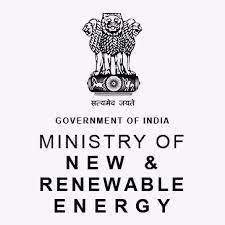 ?>
?>
MNRE (Draft Guidelines for implementation of PM-Surya Ghar: Muft Bijli Yojana for component to "CFA to Residential Sector"), 2024
Objective: The objective of PM-Surya Ghar: Muft Bijli Yojana is to promote the installation of rooftop solar systems in the residential sector. The scheme aims to achieve the installation of 1 crore rooftop solar systems by the end of the fiscal year 2026-27. Its key goals include providing free or low-cost electricity to households, with a target of supplying up to 300 units of electricity per month through rooftop solar installations. Additionally, the scheme seeks to reduce carbon emissions, develop the ecosystem for rooftop solar projects, boost the local economy, and support India's green climate commitments. The implementation period for the scheme is set until 31st March, 2027, with a significant financial outlay for Central Financial Assistance (CFA) to residential consumers, among other components. The scheme also includes mechanisms for third-party audits, coordination with state regulatory commissions, and a focus on rooftop solar in the government sector. The implementation is facilitated through a National Portal, and the scheme involves various stakeholders, including MNRE, NPIA, and SIAs, with a strong emphasis on monitoring and evaluation to ensure its successful execution.
CER Opinions -
The scheme proposes to address one of the key focus area for India's energy strategy while also meeting its commitments under the climate policy. However, given the substantial outlay of funds for the scheme, greater attention should be paid to the implementation strategy to ensure efficacy and efficiency in reaching out to the beneficiaries, and long term operational performance of the solar rooftop systems (RTS).
Solar Rooftop Suitability Index (SRSI) - Shadow Free Area: The scheme should adopt a Solar Rooftop Suitability Index (SRSI) based criteria for selection of appropriate rooftops for implementation of solar rooftop system have often witnessed limited assessment of site suitability. RTSPV installations ô have ô often been found in completely or significantly shadowed areas. In some cases, growth of vegetation or nearby construction have made such installations ineffective. The suggested rating system would enable only selection of suitable roofs ensuring that the program achieves its objective to reduce electricity bill effectively as this would ensure a reasonable CUF and operational performance.
Experience has shown that in order to meet targets for similar schemes, rooftop installations are sometimes also installed on sites currently with significant shadow or are likely to have significant shadow in the near future due to growth of vegetation/trees or nearby construction.
A Solar Rooftop Suitability Index (SRSI) based rating system is proposed so as to take into account the current shadow and potential shadowing of the rooftop panels based on available free shadow area. The ratings can be defined by the duration of shadow free hours during the day:

Revised Draft on KERC (Verification of captive status of generating plants/consumers in the State of Karnataka) Regulation, 2024
Objective:ô The document is a notification from the Karnataka Electricity Regulatory Commission (KERC) regarding the Revised Draft KERC (Verification of Captive Status of Generating Plants/Consumers in the State of Karnataka) Regulations, 2024. The revised draft regulations aim to bring regulatory control and protect the interests of stakeholders by ensuring compliance with the provisions under the Electricity Act 2003 and Electricity Rules 2005. The document outlines the criteria for determining captive status, including share-holding patterns, consumption details, and the process for verification of captive status. The categories of captive users covered include single captive users, cooperative societies, and group captive users, each with specific criteria for verification. It also addresses metering requirements, default consequences, dispute resolution, and the power to remove difficulties and amend regulations.
CER Opinion:
1. Verification of End use by Captive users:ô Revised draft clause no. 2(c) states that ãcaptive user shall mean the end user of the electricity generated in a Captive Generating Plant and the term ãcaptive useã shall be construed accordinglyã
The Electricity Rules, 2005 qualifies a user as a captive user on the basis of it being the ãend userã. A variety of cases would highlight that generation side scheduling is more appropriate than ãend useã measured at the consumer end.
Differentiating impact of transmission losses may lead to different proportion of captive energy consumed by members of a group captive plant, if measured at injection end or the drawl end. To address this,ô the calculation for ãend useã for a consumer should be recorded on the basis of the energy scheduled from the captive unit rather than that recorded at the end of the user, which would exclude transmission loss.
 ?>
?>
APSERC (Terms and Conditions for Determination of Renewable Energy Tariff) Regulations, 2024
Summary:
Key Facets of the proposal are given below:
ãô The Control Period or Review Period shall be of three (3) years starting from the date of the notification of these Regulations for financial year 2024-25 to 2026-27.
ãô The procedure for levelised generic tariff for small hydro projects (SHP) up to 1 mw capacity, biogas power projects with Rankine cycle technology and project specific tariff for small hydro projects above 1 mw capacity up to 25 mw capacity, wind power projects up to 25 mw capacity, ô solar PV projects up to 5 mw capacity ,renewable energy hybrid projects, municipal solid waste based power projects and refuse derived fuel based power projects, renewable energy with storage project, any other renewable energy technology as approved by MNRE has been undertaken.
CER Opinion:
ãô Determination of Capital Cost on the basis of prevailing market trends: The draft regulation proposed to use market trends to arrive at a capital cost for determining the tariff for various RE technologies. It is important to mention that the data on capital cost is maybe of private nature and may be treated as commercial information by a number of RE Generators. Specifically, those, who have selling power through the process of competitive bidding. Capital cost should be ascertained on the basis of those projects which have been ascertained from competitive bid tariff. In case of RE Projects for which tariff is going to be determine under section 62 and 63, there is perverse incentive for potential over invoicing for providing a higher capital cost .
 ?>
?>
APSERC (Framework for Resource Adequacy) Regulations, 2024 [Draft]
Objectives:
The overall objective of the Resource Adequacy (RA) framework is to avoid demand-supply mismatches and ensure system security and reliability at a national level. This involves enhancing the accuracy of long-term demand forecasting and power procurement planning. The framework emphasizes the necessity for distribution licensees to focus on adequate contracting through long-term contracts (at least 75%) to maintain system reliability and manage costs effectively. Additionally, it seeks to provide flexibility for short-term procurement adjustments and recognize the roles of demand response and TOD tariffs in achieving resource adequacy.
CER Opinions:
The overall objective of the Resource Adequacy (RA) framework is to avoid demand-supply mismatches and ensure system security and reliability at a national level. This involves enhancing the accuracy of long-term demand forecasting and power procurement planning. The framework emphasizes the necessity for distribution licensees to focus on adequate contracting through long-term contracts (at least 75%) to maintain system reliability and manage costs effectively. Additionally, it seeks to provide flexibility for short-term procurement adjustments and recognize the roles of demand response and TOD tariffs in achieving resource adequacy.
ãô Necessity of resource adequacy framework: The ongoing challenge of catering to the peak demand reliably is currently being faced by the utilities in India. Sufficient amount of power supply coupled with demand response framework and sharing of inter-state and inter-region power should be adopted to meet the peak demand reliably. The overall objective of Resource Adequacy (RA) framework is to avoid demand-supply mismatch, ensure system security and reliability at the national level.
 ?>
?>
CERC (Terms and Conditions for Tariff determination from Renewable Energy Sources) Regulations, 2024
Objective:
1. Prevailing market trends to Efficient 'Capital Cost Benchmarks': ô It is suggested that Commission should provide clarification for the term prevailing market trends mentioned in clause (23), (26), (46), (48), (68), (69), (71) and (73).
Given that capital cost influences various components particularly depreciation, interest cost and RoE, a capital cost benchmarking methodology should be evolved. This may also include 'market trends' covering efficient cost benchmarks in the international context. Higher weightage should be given to capital equipment procurement on competitive tendering basis. There may be inherent data bias as 'market trends' may be reported from limited set of deals. The Commission may propose a methodology for gauging market trends. This should give higher weightage to recent deals.
2. Prevailing market trends got Interest on Loan and Interest on Working Capital: The SERCs may also follow up with a Capital Cost Benchmarking approach. The existing approach sets interest rate at certain basis points above the SBI MCLR. The Commission may develop a methodology to capture 'market trends' for interest for term loans and working capitalô loans. Such data may be captured through
 ?>
?>
CERC: Commission (Terms and Conditions of Tariff) Regulations, 2024 [Draft]

Draft CERC (Connectivity and General Network Access to the inter-State Transmission System) (Second Amendment) Regulations, 2024
 ?>
?>
JSERC (Terms and Conditions for Green Energy Open-access) Regulations, 2024
 ?>
?>
CEA: Proposed procedure for verification of captive status of such generating plants, where captive generating plant and its captive user(s) are located in more than one state [Draft]

Procedure, Terms and Conditions for grant of Transmission Licence and other related matters, Regulations, 2023
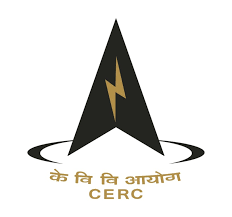 ?>
?>
Detailed Procedure for Compliance Mechanism under the Indian Carbon Market, 2023 [draft]
 ?>
?>
Gujarat Electricity Regulatory Commission (Multi-Year Tariff) Regulations, 2023 [Draft]

Approach Paper On Terms and Conditions of Tariff Regulations
 ?>
?>
BRPL Letter dt. 17th April, 2023
 ?>
?>
CERC Staff Paper on Market Coupling
 ?>
?>
Grid India (Detailed Procedures for Security Constrained Unit Commitment (SCUC), Unit Shut Down (USD), and Security Constrained Economic Despatch (SCED) at Regional Level), 2023 [Draft]
 ?>
?>
UERC (Terms and Conditions for Determination of Multi Year Tariff) (2nd Amd) Regulations, 2023
 ?>
?>
DERC (Net Metering for Renewable Energy) (First Amendment) Regulations, 2023 [Draft]
 ?>
?>
CEA: Guidelines for RA Planning Framework for India, 2023
 ?>
?>
HERC Draft Notification on "Duty to Supply Electricity on Request and Power to Recover Expenditure and Power to Require Security Regulations 2016 (3rd Amendment) Regulation, 2023".
 ?>
?>
CEA: Draft Guidelines for Medium and Long Term Power Demand Forecast
 ?>
?>
MPERC (Draft guidelines for Approach Paper on ãMethodology for Estimation of Electricity generated from Biomass in Biomass co-fired thermal power plantsã)
 ?>
?>
RERC (Grid Interactive Distributed Renewable Energy Generating Systems) (First Amendment) Regulations, 2023 [Draft]
ã According to the proposed draft, in case of net billing arrangement as well as net metering arrangement, the peak AC capacity of the RE generator should not exceed the capacity under the connection agreement.
ã In case of net billing arrangement, if the peak AC capacity exceeds the capacity of the connection agreement, the corresponding excess generation shall lapse.
ã In case of net metering arrangement, if the quantum of electricity exported exceeds the quantum imported, the distribution licensee shall purchase such excess energy at the weighted average tariff, discovered through competitive bidding and adopted by the commission whereas the net imported energy shall be billed as per the applicable slab.
This clause proposes that the ãtotal generationã from the Renewable Energy Generating Systems (REGS) under net billing arrangement shall be counted towards RPO of the Discom. The RE generation has embedded value due to the green attributes, currently separately valued as Renewable Energy Certificates (RECs). The REC framework may allow monitisation of such attributes for sale thereof. The regulation should provide for the right of the RE generator to register and claim RECs for the whole generation, except that which is exchanged with the discom. Furthermore, the regulation does not explicitly provides for a condition wherein a generator with a contract to sell part of the RE energy generated through open access to a consumer located in another state.
A scenario as illustrated in following figure 1 may occur wherein the installed capacity of a generator (say, 10 MW) is greater than the connection agreement with the Discom (say 1 MW) and 5 MW capacity is contracted with an open access consumer located in another state. In such a case, the open access consumer outside the state should be explicitly recognised as an ãobligated entityã. Thus the discom should not claim RPO for the RE energy sold to an open access consumer outside the state. Further, it is suggested that the RPO associated with the renewable energy should be applicable only for the capacity agreed for connectivity or the RE electricity injected into the grid, whichever is higher.
 ?>
?>
MoPãs Proposal on Draft Electricity (Amendment) Rules, 2023
1. Regulation 20 (I) (a): The Draft Clause states that "The
loss reduction trajectory to be adopted by the State Commissions for
tariff determination shall be in accordance with the trajectory agreed
by the respective State Governments and approved by Central Government
under any national scheme or programme."
As per section 62 of
the Electricity Act 2003, determination of tariff for distribution
licensees falls within the jurisdiction of the respective State
Commissions. While the SERCs would continue to fix loss reduction
trajectory for determination of tariff, the process of 'approval' would
influence the tariff determination and may also delay the process.
 ?>
?>
CERC (Sharing of Inter-State Transmission Charges and Losses) (Second Amendment) Regulations, 2023 [Draft]
Objective: To determine the Yearly Transmission Charges (YTC) in case of an interãState transmission system (ISTS) which has achieved deemed COD.
Deemed COD: COD of an ISTS where Date of Commercial Operation (COD) has been approved in terms of proviso (ii) of Clause (3) of Regulation 4 of CERC (Terms and Conditions of Tariff) Regulations, 2014 or Clause (2) of Regulation 5 of CERC (Terms and Conditions of Tariff) Regulations, 2019 or where deemed COD has been declared in terms of Transmission Service Agreement under Tariff Based Competitive Bidding.
The YTC for the inter-state transmission licensee which has achieved the deemed COD shall be treated in the following manner:
ã 20% of YTC shall be paid to the inter-State transmission licensee for a period of 6 months from date of deemed COD or till commencement of actual power flow, which is earlier.
ã 100% of YTC shall be paid to the inter-State transmission licensee from 7th month till commencement of actual power flow if actual power flow does not commence within a period of 6 months from deemed COD.
ã The above mentioned YTC shall be disbursed from monthly transmission deviation charges under third bill. In case of shortfall, balance charges shall be recovered from charges collected under T-GNA. In case of further shortfall, balance charges shall be paid from Deviation and Ancillary Service Pool Account under DSM Regulations.
The debt component covers a major part of the capital cost. This is payable by the licensee to the banks/financial institutions in a timely manner. A payment of 20% of Yearly Transmissionô Charge (YTC) may be insufficient for the inter-State transmission licensee for carrying out its debt-service obligations. It is recommended to increase the percentage of YTC to be paid to theô licensee for the first six months, in a manner such that the licensee shall not face the risk of debt default just after the beginning of the deemed COD.
 ?>
?>
Ministry of Power (Draft guidelines to promote development of Pump Storage Projects in the country)
ã Considering large amount of VRE integration, PSPs are of importance for greater inertia and balancing power to the grid. They are well-suited to address dynamic supply and demand in the country. Peaking operation and reliability while battery storage solutions are still evolving and address only short duration storage needs in grid management.
 ?>
?>
HERC Draft Notification on ãGreen Energy Open Access Regulation 2023"
The Ministry of Power, Govt. of India, notified the Electricity (Promoting Renewable Energy through Green Energy Open Access) Rules, 2022 on 6th June, 2022 applicable on generation, purchase and consumption of green energy including waste-to-energy plants. In adherence to the same, HERC proposed the HERC (Green Energy Open Access) Regulations, 2023. The key highlights of the draft are mentioned below:
Objective: To contribute for the fulfilment of the Indiaãs target of non-fossil energy capacity of 500 GW by 2030, 5 million ton a year green hydrogen capacity by 2030 and Net Zero Carbon Emissions by 2070, HERC has proposed (Green Energy Open Access) Regulations, 2023.
Eligibility criteria for Green Energy Open Access:
a) Consumers having contract demand or sanctioned load of 100 kW and above.
b) Consumer of a distribution licensee who is connected through an independent feeder emanating from a grid sub-station.
c) Group of two or more
 ?>
?>
POSOCO: Draft Detailed Procedure for Tertiary Reserve Ancillary Service (TRAS)
b) Criteria for Activation
c) Price Discovery.
d) Shortfall in Procurement
EAL Opinion -
1. Market Coupling under TRAS: The power exchanges would only collect bids for the TRAS market from the respective power exchanges and communicate the same to the Nodal Agency, which would combine those bids to determine market outcome. This is essentially market coupling and is deemed desirable as the underlying product is to be deployed for the sake of system security.
 ?>
?>
MoP (Draft Proposal on Day Ahead Operation of Security Constrained Economic Dispatch) 2023, [Draft]
ã The entitlements and the share of beneficiaries shall be declared by respective RLDC on D-1 by 07:00 hrs.
ã The beneficiaries shall submit their requisitions/schedules from ISGS on D-1 by 08:00 hrs.
ã The injection and drawl schedules shall be prepared by respective RLDC, based on availability and schedules submitted by 09:30 hrs.
ã The first run of DA-SCED shall be carried out on D-1 at 09:45 hrs before the opening of the bidding window of DAM. Based on the results, the ISGS have a choice to participate in Day Ahead Market (DAM) as well as Real Time Market (RTM).
ã The second run of DA-SCED shall be carried at 17:30 hrs. This will help in re-assessing the SCED schedules for the next day (D) and the committed reserve capacity available through DAM-AS.
 ?>
?>
JSERC (Modalities of Tariff Determination) Regulations, 2023 [Draft]
The expansion of existing intra-state generating projects under the Regulated Tariff Mechanism (RTM) framework is limited to the existing quantum of power approved as in the existing PPA with the licensees in the state.
The PPA between a generating station and the distribution licensee is signed and approved by the Commission based on the quantum of power mutually agreed on through PPA. Hence, the proviso to the Clause may be modified as shown below: ô
ãÎãÎHowever, such expansion under RTM framework would be restricted up to the quantum of power, for which PPA has been signed and approved by the Commission, with the distribution licensee(s) in the stateã (emphasis added).
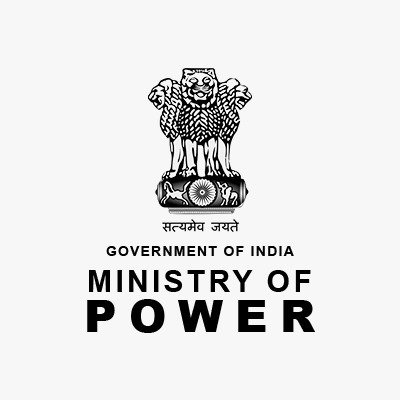 ?>
?>
Notification of Renewable Generation Obligation as per Revised Tariff Policy 2016
The Ministry of Power has proposed mandatory supply of renewable energy equivalent to minimum 25% of capacity by the thermal generating station for the stations commissioned after 01.04.2024.
CER Opinion -
1. Renewable Generation Obligation (RGO) as Renewable Capacity Obligation: As per the Clause 6.4.5 of the Tariff Policy, 2016, "coal/ lignite based thermal generation station after a specified date shall be required to establish such renewable energy generating capacity or procure and supply renewable energy equivalent to such capacity,"
It is suggested that the notification may be called as ãRenewable Capacity Obligationã instead of ãRenewable Generation Obligationã since obligation refers to capacity instead of generation.
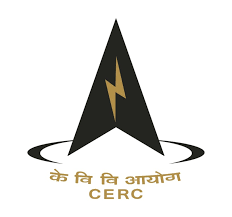 ?>
?>
Central Electricity Regulatory Commission (Staff Paper on Power Market Pricing), October 2022
The document came up with open ended questions to address this issue of high prices in the electricity markets across the globe. The major reasons behind the price spikes country wise was explained in brief and few documents have been shared for reference to address such issues on high prices and avoid such unprecedented price spikes in future. It raised four major questions, first question was about the change in pricing methodology that is the way in which the price discovery takes place in electricity market needs any change or not. It has proposed PABA and UMCP and associated advantages and disadvantages with them. Question 2 raised was regarding introducing regulatory intervention ã what should be the state that such an intervention to be initiated by the regulator. This includes exploring types of possible interventions to be introduced, tolerance level, capping, etc. Question 3 raised was regarding addressing the negatives of price cap introduced by the regulator in the power markets that includes what about the generators having high variable cost and the consumers that are willing to fulfil their demand at any cost. Question 4 raised was regarding the modification in the electricity market design to bring up demand response and energy storage systems.
 ?>
?>
UPERC (Modalities of Tariff Determination) Regulations, 2022 [Draft]
While the verdict was being announced, the Honãble Supreme Court had also asked all the State Electricity Regulatory Commissions to frame Regulations under Section 181 of the Act on the terms and conditions for determination of tariff within three months from the date of the judgement. ô
Objective: The objective of these Regulations is the determination of the modality of tariff determination for each State Electricity Regulatory Commission.
CER Opinion -
1. Incorporating the Possibility of multiple Distribution Licensees: The retail tariff of the consumers will be determined u/s 62 of the Electricity Act, 2003. The recent Electricity (Amendment) Bill, 2022 enables multiple retailers in the area of license in order to increase the competition in the distribution sector. Hence, the possibility of multiple distribution licensees should be kept in the perspective while framing the modalities for distribution licensees.
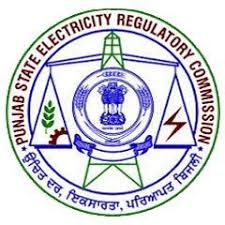 ?>
?>
PSERC (Terms and Conditions for determination of Generation, Transmission Wheeling and Retail Supply Tariff)(1st Amendment) Regulations, 2022 [Draft]
While the verdict was being announced, the Honãble Supreme Court had also asked all the State Electricity Regulatory Commissions to frame Regulations under Section 181 of the Act on the terms and conditions for determination of tariff within three months from the date of the judgement. ô
Objective: The objective of these Regulations is the determination of the modality of tariff determination for each State Electricity Regulatory Commission.
 ?>
?>
CERC: Staff Paper on Power Market
This document covers the following aspects of Power Market.
ã Does Pricing Methodology Need a Change?
The idea for change in pricing methodology is proposed in the staff paper. The two pricing methodologies Unconstrained Market Clearing Price (UMCP) and PABA were compared. The idea for Pay As the bid is introduced to address the issue of supernormal profits earned by inframarginal generators. But PABA can give temporary addressal to the issue, as the generators participating in market are paid exactly the same price at which they placed the bid. The generators having low Variable Cost (VC) were bidding at comparatively lower prices in the market and additional component include their margin and also recover Fixed Cost (FC). In PABA, the low VC generators will bid higher gradually to recover their FC and margin. Also by introducing new pricing algorithm, the sellers will analyse the difference in cost between two pricing methodologies and just change their bidding behaviour.
 ?>
?>
MoP: Concept Note on Pooling of Tariff of 25 years Plus Thermal/Gas Generating Stations
ã The GENCOs shall provide the information regarding CoD of all the stations to respective RLDC/SLDC.
ã Coal/Gas plants crossed 25 years are considered for creation of CP.
2. Pooling as ST Measure: Available and operational thermal generating capacity can provide needed resources in the ST. This can partly address the RA concern of imminent nature as there is no gestation period.
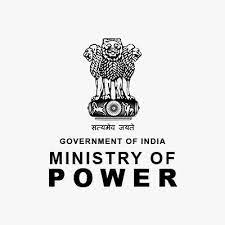 ?>
?>
Electricity (Amendment), Bill
Highlights -
The Union Power Ministry on 8th August, 2022 introduced the ãElectricity (Amendment) Bill, 2022ã in Lok Sabha.
ã Section 14 (b) (Sixth proviso): The Bill suggests to omit the words ãthrough their own distribution systemã for the distribution of electricity.
ã Section 42: The discom owing network shall provide non - discriminatory open access to other licensees in the area of supply.
ã Section 26: More power and functions of the NLDC for ensuring safety and security of the grid, and for the economic and efficient operation of the power system
ã Section 28: The Bill provides for payment security mechanism to ensure timely payment of dues.
ã Section 60:
1. The power and associated costs from existing power purchase agreements (PPAs) with existing distribution licensee will be shared among all discoms in the area of supply.
2. The State Government will set up cross subsidy balancing fund to deposit surplus of cross-subsidy of distribution licensee and to provide for any deficit with another distribution licensee in same area of supply.
ã Section 62: The Appropriate Commission will determine maximum ceiling tariff and minimum tariff for retail sale of electricity.
ã Section 64: The Bill provides for suo-motu determination of tariff by the Appropriate Commission, thereby reducing the time required for tariff determination and provision for interim tariff.
ã Section 77: The Bill amends qualification of chairperson and members of Central Commission.\
ã Section 142: The Bill proposes to impose penalty onto the obligated entities for shortfall in meeting the RPO.
CER Opinion -
'Carriage and Content separation' vs 'Distribution of electricity with or without network':
The Bill proposes to bring forth retail competition in electricity supply by redefining ãdistribution of electricityã (which was hitherto defined to be undertaken only through the distribution network) as ãdistribution of electricityã both with and without distribution network. While ãdistribution of electricity through the distribution networkã refers to the existing business of the distribution licensee (i.e. wire plus energy business), ãthe distribution of electricity without a distribution networkã refers to ãretailing of electricity without a distribution networkã.
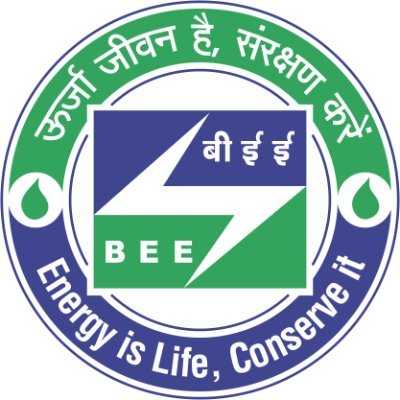 ?>
?>
Policy paper for Indian Carbon Market, 2022 [Draft]
ã Market will be divided into two dimensions viz. compliance market and offset market. The compliance will be responsible for transitioning from the PAT scheme whereas the offset market will be transitioning from project-based REC/CDM to a carbon credit trading mechanism.
It is suggested that the EScerts be initially be converted on a voluntary basis and later be subsumed completely by the carbon market. Such a transition be planned in advance ensuring seamless transition from EScerts market to the carbon market in terms of target setting as well as compliance framework. The REC market has a number of additional benefits for the Indian power sector including development of the RE development and green electricity products1. The RECs should remain voluntarily convertible even in the later phase, thus ensuring that the REC market, with its institutional framework continues to play its role in development of the RE resources in the country.
 ?>
?>
CEA: Draft Guidelines for Resource Adequacy Planning Framework for India
ã Optimal capacity mix based on minimization of overall system cost.
ã Time horizon for the implementation of the framework should be 5 ã 10 years.
 ?>
?>
UPERC Verification of Generating Plants and Captive Consumers, 2022 [Draft]
ã Not less than twenty six percent of the ownership is held by the captive user(s).
 ?>
?>
MNRE National Repowering Policy for Wind Power Projects, 2022 [Draft]
Objective -
The objectives of the Repowering Policy are optimum utilization of Wind energy resources by maximizing energy (kWh) yield/ sq. km of the project area and utilizing the latest state of the art onshore Wind turbine technologies.
Eligibility -
ã All wind turbines identified under BIS Act.
ã Wind turbines completed their design life.
ã Wind turbines below 2 MW rated capacity.
ã Turbines connected to a single Polling Sub Station (PSS).
ã Wind power Project with adjacent land area.
Further, as per Clause 2, "The repowering of Wind turbine of below 2 MW capacity must be consideredã.
If the turbine of capacity 1 MW is considered for repowering, the policy would allow selection of new turbine of 1.5 MW, which is would still fall below 2 MW threshold specified for repowering. Hence, new turbines should not be less than this limit of 2 MW. This criteria should be over and above the 1.5 times limit suggested in the policy.
 ?>
?>
CERC (Terms and Conditions for Dealing in Energy Saving Certificates) (First Amendment) Regulations, 2022
 ?>
?>
CERC (Sharing of Inter-State Transmission Charges and Losses) (First Amendment) Regulations, 2022[Draft]
2. Principles of sharing transmission charges: In the draft Amendment Regulations, Clause 3(3) statesô ãBills for transmission charges shall be raised on the buyer in terms of this clause notwithstanding any provisions in the PPA and the settlement of the transmission charges inter se between the buyer and the generating station or the seller, wherever necessary, shall be made in terms of the PPA or as per the mutual agreement.ã, and may be rephrased as ãBills for transmission charges shall be raised on the buyer in terms of this clause notwithstanding any provisions in the PPA and, the settlement of the transmission charges inter se between the buyer and the generating station or the seller, wherever applicable, shall be made in terms of the PPA or as per the mutual agreement.ã The term ãwherever necessaryã may be replaced with ãwherever applicableã to provide legal clarity.

Central Electricity Authority (Flexible operation of Thermal Power Plants) Regulations, 2022 [Draft]
ã All TPPs shall be capable of providing the required output as per the schedule for generation finalized by appropriate LDCs.
ã The appropriate Load Despatch Centres shall schedule all coal based thermal power plants, up to the MPL of 55%, to support the operation of must run stations.
ã The appropriate Load Despatch Centres may schedule all coal based thermal power plants, up to the MPL of 40%, to support the operation of must run stations, after the implementation of modifications by the TPPs as required.
ã The minimum rate of loading or unloading for coal based thermal power plants shall be 3% per minute above the MPL.
ã For supercritical and ultra-super-critical units, minimum rate of loading or unloading shall be 5% per minute above the MPL.
ã The thermal power plants shall implement the necessary modifications to comply with these regulations in order to generate flexible power according to schedules finalized by appropriate LDCs.
 ?>
?>
MoPãs Proposal on High Price Market Segment for Day Ahead Market (HP-DAM)
Highlights -
The Ministry of Power floated a proposal on High Price Market Segment for Day Ahead Market (HP-DAM) on 1st August, 2022. The key highlights of the document is as below:
The issue of high price in spot market in Power Exchanges was addressed by CERC by introducing Price Cap of Rs 12/ unit in all market segments in April, 2022. The only drawback in it was that the generators having high variable cost are unable to participate in the market. To address this phenomenon, the proposal consists the following points -
ã Eligibility of seller - having variable cost greater than Rs. 12/kWh .
ã Minimum bid price: Rs. 0/kWh.
ã Price Discovery: Double-sided closed auction
ã Operation parallel to I-DAM
ã This will enable the high cost power plant to be available during high demand period that was not possible previously. It targets only the buyers who are in deficit and can afford high price payment to participate in this segment. The other buyers will not get affected by operation of this additional segment
CER Opinion -
ã Price Spike on Power Exchanges and Role of HP-DAM: Price spikes on the power exchanges over the past few months has been a cause for worry for the regulators as well as policy markets. This, along with the fact that some of the sellers would have made significant margins above their marginal cost (MC), may seem to have justified the idea of HP-DAM. However, the fundamental economic and implementation issues create an uncertainty about its long-term impact, while it may seem to result in some short-term benefits.
The fundamental reasons for the recent price behavior needs to be identified and addressed across the electricity supply chain, beginning with coal supply issues . HP-DAM may be a temporary solutionô that would likely alter bidding behavior as well as market outcome for DAM market segment itself. This is further explained below.
 ?>
?>
The Uttar Pradesh Solar Energy Policy, 2022 [Draft]
To align with India's ambitious solar PV capacity expansion program, the State envisages to accelerate the deployment of solar power by means of implementation of large-scale projects, small scale distributed systems, establishment of ultra-mega solar parks and Rooftop solar PV projects. These targets will be achieved by introducing new mechanism that will support consumers, businesses and developers in the sector.
Accordingly, State Government of Uttar Pradesh hereby declares and adopts Solar Energy Policy, 2022, with a target of 16000 MW solar power projects up to 2026-27 distributed according to the following table and, shall remain in operation for a period of 5 years.
The Policy provide the timelines and conditions for installation of Roof top Solar Systems, off-grid solar applications, utility scale grid connected solar projects, solar power projects with storage, solar parks and the details of incentives and facilities applicable for the said different types of the installation.
CER Opinion -
ã Basic Design Feature of Solar Policy: The Draft Solar Policy is largely similar to the UP Solar Policy 2017. Given that most of the key objectives of the policy were unmet (till its target year 2022), it should be noted that something was inherently flawed in the basic design of the previous policy. Feedback from stakeholders (who have invested and who did not) is necessary to address lacunae in the previous policy, which is largely been followed in its design as well as content. Answers to the following questions should help identify areas for improvement and, hence, help design of the solar policy.ô ô ô
 ?>
?>
MPERC (Power Purchase and Procurement Process) Regulations, Revision-II, 2022 (RG-19(2) of 2022) [Draft]
Highlights -
These Regulations are proposed to revise the MPERC (Power Purchase and Procurement Process), Regulations, Revision I, 2006 and shall be applicable to all purchases of power from conventional and renewable energy sources of energy made or as proposed to be made by a distribution licensee. In these regulations the Commission has laid down the framework for power procurement planning to be done by the distribution licensee using IT tools from different energy sources, based on the forecasting by methods such as PEUM, econometric analysis, etc.
An emphasis has been done on archiving the information related to power procurement and making it available publicly. As per these regulations, the distribution licensees to constitute dedicated cell for all the power procurement activities including demand forecasting.
CER Opinion -
ã Need for Long-term Demand Forecasting and Power Procurement Planning: Power procurement cost is a major part of the Aggregate Revenue Requirement of the distribution utilities. Power procurement plans and contracts typically have a long-term horizon and, hence, need to be worked out well in advance, based on reliable and dependable forecast. A reliable electricity demand projection cannot only help the distribution utilities to plan power procurement in advance, but also optimise the cost of the power purchase.
CER, IIT Kanpur carried out a research on the importance of these aspects and published a book on ãRegulatory Framework for Long-term Demand Forecasting and Power Procurement Planningã, highlighting the need for a regulatory framework for the same. Given the experience of CER and EAL in carrying out Long-term Demand Forecasting and Power Procurement Planning for the states of Uttar Pradesh and Chhattisgarh, we reinforce the need for a robust regulatory framework for the same. From these studies, it was inferred that significant economic benefits in terms of reduced private and social costs is possible through Long-term Demand Forecasting and Power Procurement Planning.
 ?>
?>
POSOCO (Detailed Procedure for REC Mechanism in compliance of CERC (Terms and Conditions for Renewable Energy Certificates for Renewable Energy Generation) Regulations, 2022) [Draft]
ã Eligibility of different entities to participate in this procedure
ã Detailed process of accreditation & registration of the eligible entities connected to inter-state as well as intra-state transmission system.
ã Process for issue of RECs to eligible entities and redemptions of the RECs
 ?>
?>
UERC (Standards of Performance) Regulations, 2022 [Draft]
ã Payment of Compensation - Consumer bills adjustments or NEFT/RTGS/cheque (permanent disconnection with no outstanding dues).
ã The licensee must report the compensation amount, type of consumer, and other associated data linked to complaints made by consumers and complaint status to the Commission on a quarterly basis
 ?>
?>
WBERC (Open Access) Regulations, 2022 [Draft]
Highlights -
WBERC on 12th May, 2022 notified the Draft WBERC (Open Access) Regulations, 2022. The key highlights of the draft are mentioned below,
ã Any customer wanting to avail Open Access must have ABT interface meters in line with CEA (Installation and Operation of Meters) Regulations 2006. Those customers who are connected with open access at 33KV or above voltage must have a 24x7 control room with dedicated communication system and real-time on line data with SLDC.
CER Opinion -
1. Clause No. 7: The draft clause states ããÎthe Nodal Agency shall not compromise with the margin of different parameters of distribution systemsãÎã. It is suggested that there should be a mechanism to transparently determine these margins, and such margins should be publicly displayed through the SLDCãs website in a conspicuous manner. This will ensure that there is no discrimination with a consumer during specific periods.
2. Clause No. 7.2 (a): The draft clause states ããÎOpen access as will be determined by regulation 7.7 of these regulationsã. It is observed that there is no presence of Clause No. 7.7 in the draft Regulations. This clause seems to refer to Clause No. 7.6, as such the required change may be made.
 ?>
?>
POSOCO (Detailed Procedure for Estimation of the Requirement of SRAS & TRAS at Regional Level), 2022 [Draft]
POSOCO on 24th May 2022 notified the draft Detailed Procedure for Estimation of the Requirement of Secondary Reserve Ancillary Services (SRAS) & Tertiary Reserve Ancillary Services (TRAS) at Regional Level. The key highlights of the draft are mentioned below,
Methodology for assessment of the SRAS & TRAS reserves include:-
ã 99 Percentile of the Area Control Error (ACE) of the respective control area
ã Net demand forecast error
ã Variability in Net demand forecast error
ã Variability in Net demand
CER Opinion -
1. Evolution of Market for Ancillary Services: CERCãs Ancillary Services Regulations, 2021 laid down framework for rollout of ancillary services in the country . Evolution from charges for Unscheduled Interchange to market based Deviation Settlement Charges was based on the premise that there were shortages of power in general and the discoms avoided power procurement and pushed the deviations to the system.
2. Day Ahead Reserve Estimation (Clause No. 8.4.2): Draft procedure suggests that "For the day ahead reserve estimation, last seven days data shall be used". Given the demand profile and the relative contribution of variable renewable energy, reserve needs for a high demand (high VRE) day would be different from a low demand (low VRE) day.
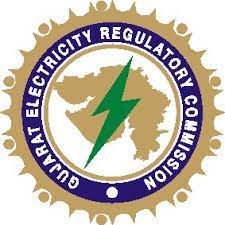
Draft GERC (Electricity Supply Code and Related Matters) (Third Amendment) Regulations, 2022

Draft APERC Renewable Power Purchase Obligation (Compliance by purchase of Renewable Energy/Renewable Energy Certificates) Regulations, 2022
ã Roof-top Solar PV System, if such consumer is an obligated entity.
ã Distribution Licensees can purchase renewable energy from other Distribution Licensees.
Section 86(1)(e) mandates the SERCs to specify a percentage of total consumption in the area of the licensee to be sourced from renewable energy sources. Redefinition of ãtotal consumptionã to exclude consumption from RES suggests a departure from the provision of the Act and should be restored.

Draft GERC (Security Deposit) (Third Amendment) Regulations, 2022
Highlights -
GERC on 19th February, 2022 notified the Draft GERC (Security Deposit) (3rd Amd) Regulations, 2022. The key highlights of the draft are mentioned below:
Clause No. 4.11:
The licensee shall pay interest on Security Deposit of consumer other than Security Deposit received from Temporary Consumer for the electricity supplied, at the Bank Rate (as on 1st April of every year) notified by Reserve Bank of India or such higher rate as may be fixed by the Commission from time to time. The interest accrued to the credit of the consumer during the previous year shall be adjusted in electricity bills of May of every year for consumers covered under the monthly billing cycle and in electricity bill of May or June for those covered under bi-monthly billing cycles.
Clause No. 4.14:
The Licensee, on termination of the agreement by either party shall refund Security Deposit after adjustment of dues, if any within 7 days.
CER Opinion -
1. Security Deposit based on Average Billed Amount: Wherever there is a reference to Security deposit, the Regulations only refer the average consumption of number of units. Given the two-part/ multi-part tariff structure, the security deposit should cover energy as well as fixed charges

Draft GERC (Consumer Grievances Redressal Forum and Ombudsman) (First Amendment) Regulations, 2022
ii. If the Licensee fails to resolve a Complaint in accordance with the Standards of Performance specified by the Commission

Draft GERC (Licenseeãs Power to Recover Expenditure incurred in providing Supply and other Miscellaneous Charges) (Third Amendment) Regulations, 2022
Highlights -
GERC on 19th February, 2022 notified the Draft GERC (Licensees' Power to Recover Expenditure incurred in providing Supply and other Miscellaneous Charges) (3rd Amd) Regulations, 2022. The key highlights of the draft are mentioned below:

Draft Guidelines for UERC (Deviation Settlement Mechanism and Related Matters) (First Amendment) Regulations, 2022
UERC notified a draft on ãDeviation Settlement Mechanism and Related Matters (First Amendment) Regulations, 2022ã on March, 2022. The key highlights of this draft Regulation are given below:
New Definition have been added:
1. Area Clearing Price (ACP) means the price of a time block electricity contract established on the Power Exchanges after considering all valid purchase and sale bids in particular area(s) after-market splitting, i.e., dividing the market across constrained transmission corridor(s).
2. Daily Base DSM Charge means the sum of charges for deviations for all time blocks in a day payable or receivable as the case may be, excluding the additional charges under Regulation 8.ã
3. Day Ahead Market (DAM) means a market where physical delivery of electricity occur on the next day (T+1) of the date of transaction (T) and is governed by the Central Electricity Regulatory Commission (Power Market) Regulation, 2010 (as amended from time to time), the Rules and Bye-Laws of the Power Exchanges as approved by the Central Commission.ã
CER Opinion -
The broader alignment of the UERC DSM regulations to those applicable at the inter-state level (i.e. by CERC) is necessary to ensure that there is overall harmony in treatment of deviations. However, two important points that would justify departure of intra-state DSM regulations to those applicable for the inter-state level. These are:
1. Applicability of DSM regulations in line with the impact of variable RE to the stateãs power system applicability of DSM regulations in line with the impact of variable RE to the stateãs power system.
2. The adoption of ãlocal priceã signal rather than a national average area clearing price (ACP).
 ?>
?>
CERC (Connectivity and General Network Access to the inter-State Transmission System) Regulations, 2021
(c) Renewable Power Park Developer;
 ?>
?>
CERC: Draft Guidelines for Registration and Filing Application for Establishing and Operating Over the Counter (OTC) Platform
 ?>
?>
Ministry of Power Amendments to Guidelines for short-term Procurement of Power (i.e. for a period of more than one day to one year) by Distribution Licensees through Tariff based bidding process [Draft]
Highlights -
MoP has issued the Amendments to Guidelines for short-term Procurement of Power (i.e. for a period of more than one day to one year) by Distribution Licensees through Tariff based bidding process on 22nd December, 2021. The key highlights of the draft are as below:-
The following sub-clauses have been added in the existing Guidelines under Clause No. 6.4 (iv) g;
ã In case the Seller fails to offer the contracted power as per the Agreement to the Procurer and sells this power without Procurerãs consent to any other party, the Procurer shall be entitled to claim damages from the seller for an amount equal to the higher of:-
a. Twice as per the PPA
b. The entire sale revenue accrued from Third Parties on account of sale of the contracted power.
There will not be any fixed charges liability to the procurers, for the power which was not supplied.
ã On a complaint to this effect by the Procurer to the concerned load dispatch center, the Seller shall be debarred from participating in power exchanges and scheduling of this power in any short/ medium/ long-term contracts from that generating station for a period of 3 months from the establishment of default, in the complaint. The period of debarment shall increase to 6 months for send default and shall be 1 year for each successive default.
CER Opinion -
1. Name of the document: These Guidelines named as ãDraft Amendments to Guidelines for short-term Procurement of Power (i.e. for a period of more than one day to one year) by Distribution Licensees through Tariff based bidding processã, may be renamed as ããÎfor a period of more than one day, and up to one yearãÎã in order to match the name of the term of agreement.
ô ô ô
2. Clause No. 6.4 (iv) (a): The guidelines now also include a penal structure for ãdeviationã from contracted capacity that has been granted open access (beyond 15%). It should be clarified if the Contract Performance Guarantee (CPG) would be applicable over and above the penalty for ãdeviationã provided for in clause 6.4 (iv) (e) with respect to the seller.
3. Contract Performance Guarantee (CPG): The Contract Performance Guarantee (CPG) of Rs. 2 lac per MW per month is an insignificantly amount as compared to the value the seller can derive from non-performance. For e.g. In case the unit price of electricity is assumed to be Rs. 4.00 per kWh, the total amount at stake for, say 1 MW of supply during peak hours (say a 4-hour duration) for 20 working days would be itself be Rs. 80,000.00. The CPB seems insignificant and hence highlights the need for the penalty structure to address incentive to divert power when market prices are high for certain duration during the contract.
 ?>
?>
TNERC (Grid connectivity and Intra-State Open Access) (Amendment) Regulations, 2014 [Draft]
2. Regulation No 19 (2):
Definition of ãpredominantã needs to be included in these Regulations,
or may be referred to in case a definition already exists.
3. Regulation No 19 (2): To
bring about clarity differentiating the applicability of the
Regulations for the captive consumers and others, the following phrase
is suggested to be inserted in the draft amendment, ãThese apportionment
Regulations are differentiated across entities, seeking open access,
based on them being a captive entity or notã.
4. Regulation No 19 (2) (A): The
category mentioned under Non-captive Thermal as, ãShort-term
inter-state open access including power exchange transactionsã, is
suggested to be separated to ãcollective transactions through power
exchangeã and ãshort-term inter-state open accessã. This will set a
clear priority between the two types of transactions.
 ?>
?>
HPERC (Consumer Grievances Redressal Forum and Ombudsman) (Second Amendment) Regulations, 2021
Highlights -
HPERC notified draft amendment to the (Consumer Grievances Redressal Forum and Ombudsman) Regulations, 2021 on 24th Nov, 2021. The key highlights of the same are mentioned below:
1. Prosumer (Regulation 3 ((1) (ia))): Definition of ãProsumerã to be added in the prevailing Regulation.
2. Additional Forum (Regulation 5 (2), (3)): Provision for establishment of at least one additional forum for each of distribution licenseeã operation circles, by the distribution licensee is to be added. The jurisdiction thereof in relation to the consumers under the respective operation circles, will be as follows:
a) For the consumers covered under single-part retail tariff - all types of complaints, whether monetary or non-monetary.
b) For the consumers covered under two-part retail tariff - all types of complaints whether monetary or non-monetary, where the following conditions are met:
ã the amount of dispute / claim ãÊ ã¿ 2 Lakh
ã the standard supply voltage ãÊ 22kV
CER Opinion -
1.Definition of Prosumer [Draft Regulation 3 (1) (ia)]: The draft Regulation provides the definition of ãProsumerã. However, the term ãProsumerã is not used further in this Regulation. So, it is suggested to append the proposed definition of Prosumer by including a statement just after its definition such that wherever there is a reference to consumer in this Regulation, it should also deem to include prosumers.
The reference to ãProsumerã may increasingly appear in a variety of other Regulations and orders (for example in the case of tariffs, open access, SOPs etc.). Hence, it is suggested that this definition for Prosumer should be a part of the Stateãs Grid Code. The prosumer may also refer to mobile storage such as electric vehicles (EVs) especially when EVs inject power in vehicle to grid mode (V2G).
 ?>
?>
APERC (Terms and Conditions for short-term procurement/sale of power) Regulation, 2021
APERC issued draft on 23rd Nov, 2021 regarding (Terms and Conditions for short-term procurement/sale of power) Regulation, 2021. The key attributes of this Regulation are given below:
Demand Estimation:
SLDC to carry out monthly demand estimation for each block of 15 minutes duration, based on (historical data, demand forecasts by the licensees and AI tools - deep/machine learning etc). In addition to these, weekly & day-ahead demand estimations should also be considered by SLDC.
This Regulation has separate provisions for monthly, weekly and day-ahead power procurement plan as mentioned below:
1. Monthly Power Procurement Plan:
ã Each licensee to provide its demand estimation for each block of 15 minutes duration to SLDC by the end of 10th of every month. ô
ã After reviewing its own demand estimation for the State, estimate provided by all the licensees, availability of power from all the approved sources, SLDC to communicate with the licensees regarding the power required to be procured by each licensee on a short-term basis for the following month within three working days from the date of receipt of demand estimations from the licensees.
CER Opinion -
1. Short-term Demand Estimation and Procurement Plan (Regulation 3, 4, 5, 6): The draft Regulation provide provisions for the demand estimation and power procurement plan for short-term at three levels i.e. monthly, weekly and daily. It is suggested that the demand estimation as well as the power procurement plan proposed in this Regulation should be carried out at four levels instead of three levels namely:
ã Monthly demand estimation and power procurement plan
ã Weekly demand estimation and power procurement plan
ã Day ahead estimation and power procurement plan
ã Demand estimation and power procurement plan for Real-time market (RTM), at least 8 to 10 blocks ahead before the RTM (to make final preparation for buy and sell in the RTM)
 ?>
?>
OERC (Procurement of Energy from Renewable Sources and its Compliance) Regulations, 2021 [Draft]
Regulation (No. 4.7): In case of Hybrid Sources, the power procured from the hybrid project may be used for fulfillment of solar RPO and non-solar RPO in the proportion of rated capacity of solar and wind power in the hybrid plant respectively.
Further, renewable power stored in any form of storage (Battery, Mechanical or Gravitational) and subsequently discharged to the grid from such storage shall be treated as renewable energy.
CER Opinion -
1. Accounting of Renewable Energy from Storages (Clause 4.7): Clarification on accounting of renewable energy from storages as stated in Clause 4.7 ãFurther, renewable power stored in any form of storage (Battery,ô Mechanical or Gravitational)ô andô subsequentlyô dischargedô toô theô gridô fromô suchô storageô shallô be treated as renewable energyã may be required.
It is suggested that in case of storages connected to solar sources, the discharge of energy from such storages should be accounted as solar energy and energy procured from such storages may be used for fulfillment of solar RPO.
Similarly in case of storages connected to non-solar sources, the discharge of energy from such storages should be accounted as non-solar energy and energy procured from such storages may be used for fulfillment of non-solar RPO.
For storages connected to hybrid sources, the discharge of energy from such storages should be accounted towards solar and non-solar energy in the proportion of generation of solar and wind power respectively in the previous month from the hybrid plant, and energy procured from such storages may be used for fulfillment of solar RPO and non-solar RPO in the same proportion.
 ?>
?>
CEA Draft (Deletion and modifications of Formats for furnishing of the Statistics, Returns or Information, its time schedule and periodicity), 2021
CEA by utilizing the power granted under sub-regulation (2) of regulation 9 of the said regulations, decides for the deletion of thirteen formats among them (namely Format no.30, Format no.39, Format no.40, Format no.45, Format no.46, Format no.47, Format no.50, Format no.52, Format no.55, Format no.57, Format no.61, Format no.62 and Format no.63) and the modification of five formats (namely Format no.21, Format no.49, Format no.51, Format no.53 and Format no.54).
CER Opinion -
Need for Data - Tool for effective policy and regulatory design:
It is important to highlight that availability of information is very crucial to design effective policy and regulatory framework and also enable various stakeholders including researchers to evaluate the impact of various measures and suggest improvement thereof. It is suggested to retain most of the formats proposed to be deleted. Given change in the sector, additional formats are identified for inclusion as well.
Absence of data would create significant information asymmetry. While the cost of providing such data is not significant to the sector participants, its value to the sector is extremely high. CEA should reconsider the proposal to drop various data formats and take necessary steps to make data being collected through various formats to be made available through its website.

Draft Central Electricity Regulatory Commission (Deviation Settlement Mechanism and Related Matters)
ã WS Seller: Seller who provide solar and wind resource based power
The draft Regulation defines General Seller as ãa seller in case of a power project based on other than wind or solar resourcesã and WS Seller as ãa seller in case of a power project based on wind or solar energyã. It is suggested to modify the above definitions of General Seller and WS Seller. The General Seller may be renamed as ãDespatchable sellerã in case of a power project based on the conventional power like thermal power and a ãconstrained Despatchable sellerã like Run-of-River (RoR) generating stations. The WS Seller may be renamed as ãNon-Despatchable sellerã in case of a power project based on wind or solar energy.
ã Definition of RE Rich State: A RE rich state is defined as a state with 1000 MW or above installed capacity of variable renewable energy (VRE) (i.e. Solar and Wind) within the control area of the state. The variability and uncertainty associated with the schedule of a state depends on the ãcontracts that it handles for consumption within the state. The RE rich state should thus be defined with reference to the contracted capacity of VRE by all entities connected to the ãcontrol area of the stateã (i.e. including long-term open access for VRE by consumers).
 ?>
?>
Ministry of Power Electricity (Rights of Consumers) Amendment Rules, 2021
2.
Classification of Metros and Large Cities: In Rule (10(3)), ãIn view of
the increasing pollution level particularly in the metros and the large
cities ãÎã, An existing definition for urban conglomerations (metro/city
etc) as applicable may be used for the purpose for implementation of
the provision regarding shift from DG backup.
 ?>
?>
RERC (Renewable Energy Obligation) (Seventh Amendment) Regulations, 2021 [Draft]

Draft Electricity (Promoting Renewable Energy through Green Energy Open Access) Rules, 2021
Ministry
of Power issued the Draft Electricity (Promoting Renewable Energy
through Green Energy Open Access) Rules, 2021 on 16th August, 2021. Some
of the key points are:
ã Applicability - This rule will be pertinent to green energy purchase and consumption including energy generated via Waste-to-Energy plant.
ã Renewable Purchase Obligation (RPO) -
There will be uniform RPO for all obligated entities (i.e. the
distribution licensees, open access and captive power consumers).
Non-obligated entity may also select to purchase and consume Renewable
Energy as per their requirements.
ã Purchase of Green Hydrogen -
The obligated entity including the Industries can also purchase Green
hydrogen (hydrogen produced using electricity from RE sources).
ã Green Energy Open Access - To
provide green energy open access to consumers who wants to use it, the
Appropriate Commission shall prepare regulations in line with this Rule.
The consumers, except captive consumers, having contracted
demand/sanctioned load of 100 kW and above shall be eligible to take
power through green energy open access.
CER Opinion -
1. Renewable Purchase Obligation (RPO) (Rule 4): As
per the draft Rule (4.1), ãThere shall be uniform Renewable Purchase
Obligation, on all obligated entities that is ã the distribution
licensees, open access consumers and captive power consumersã. However,
it needs to be clarified whether the uniformity of RPO on obligated
entities is across the country or across these three set of obligated
entities within a state.
2. Defining ãBehind the meterã Generation Sources (Rule 4):
Rule (4.2 (A)) provides the definition of ãBehind the meterã as ãthe
electricity generated for their own use and not for injection of such
power into the electricity gridã. Although, in the case of captive
(group)ô and specifically plant not located on the premises of the
consumer, such power generated for their own use would have to be
ãinjectedã into the electricity grid for wheeling the same to the
premises of the consumers. Hence, the above definition need to be
modified appropriately.
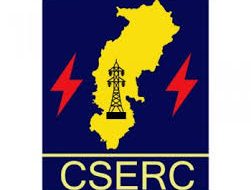 ?>
?>
Chhattisgarh State Electricity Regulatory Commission (Terms and Conditions for determination of tariff according to Multi-Year Tariff principles and Methodology and Procedure for determination of Expected revenue from Tariff and Charges) Regulations, 2021 [Draft]
Highlights -
Chhattisgarh State Electricity Regulatory Commission released draft CSERC (Terms and Conditions for determination of tariff according to Multi-Year Tariff principles and Methodology and Procedure for determination of Expected revenue from Tariff and Charges) Regulations, 2021 based on the objections/suggestions/comments received on the Draft MYT Regulations, 2020. The important highlights of this draft regulation are given below:
Financial Principles:
ãô Return on Equity (Regulation 23):
oô ô 14% for Generation, Transmission & SLDC.
oô ô 16% for Distribution
oô ô Grossed up by MAT rate
oô ô Rate of pre-tax RoE = Base Rate / (1- MAT Rate)
ãô Depreciation (Regulation 25):
oô ô Value Base = Capital Cost of the asset
oô ô Straight Line Method
oô ô Depreciation on new assets will be charged on day-wise pro-rata basis during the first year of the COD of the asset.
CER Opinion-
We are pleased to note that several inputs given on the previous draft of the regulations have been incorporated in this revised draft. Some important ones are highlighted here along with additional ones for consideration.
ã Return on Equity (Regulation 23.3):
As Capital Asset Pricing Model (CAPM), often used for calculating return on equity, provides an estimate of post-tax RoE that should not be grossed up by the rate of effective tax. Adoption of such approach across the sector is erroneous, and provides excess return. This places additional burden on tariff paid by the consumers.
A recent study at CER, IITK using CAPM and multi-factor models, using a comprehensive data for over 125 infrastructure companies between 1998-2018, estimates the cost of equity for conventional generation sector to range between 12.86-16.52%, on a post-tax basis, refer Figure 1: Cost of Equity ã CAPM and Three-Factor Model.
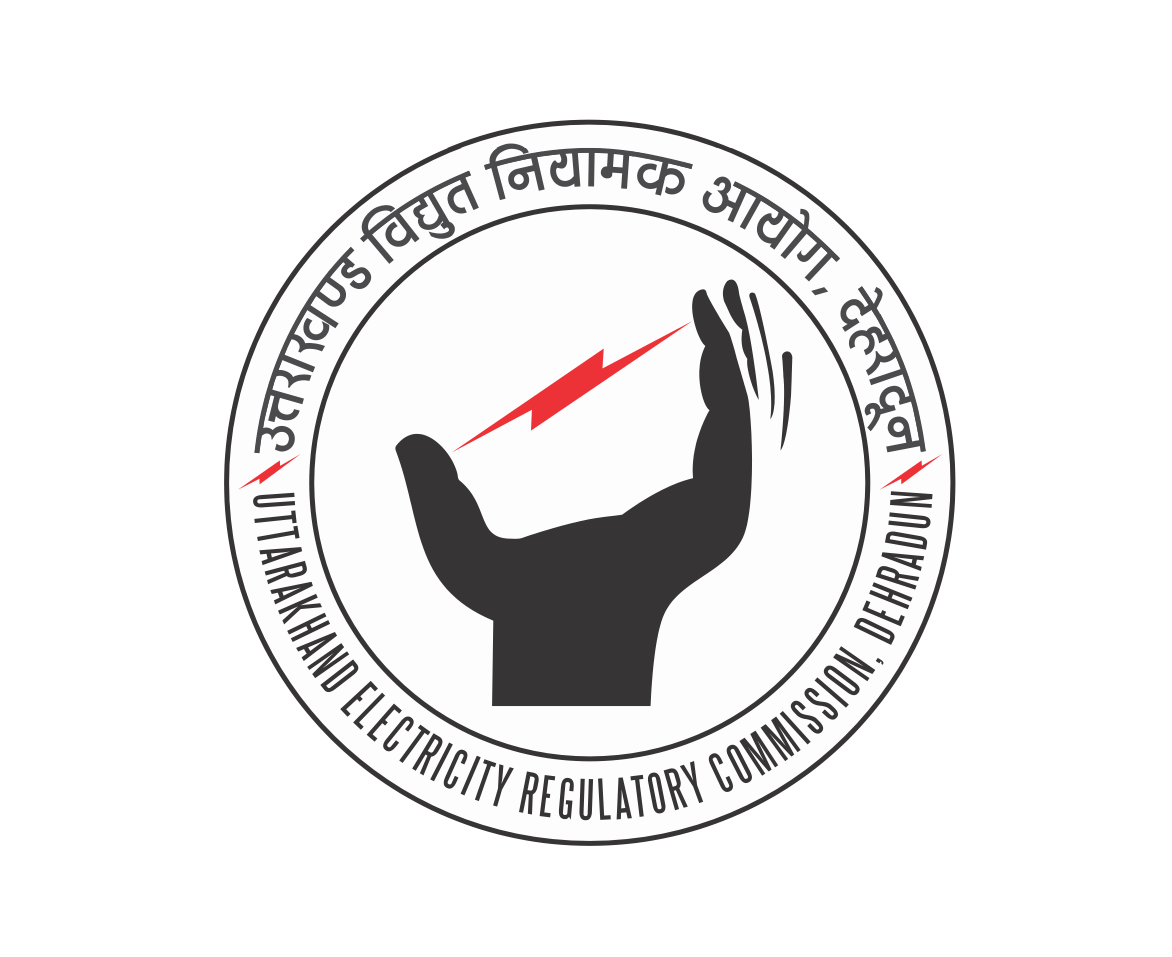 ?>
?>
Review of the Benchmark Capital Cost for Solar PV, Solar Thermal and Grid Interactive Rooftop & Small Solar PV Plants to be applicable for FY 2021-22 and onwards till reviewed/revised by the UERC
Highlights -
Uttarakhand Electricity Regulatory Commission (UERC) reviewed the "Benchmark Capital Cost for Solar PV, Solar Thermal and Grid Interactive Rooftop & Small Solar PV Plants to be applicable for FY 2021-22 and onwards till reviewed/revised by the UERC" on 30th July, 2021.
Some of the key points are given below:
ã The normative capital cost for Solar PV, Solar Thermal and Grid Interactive Rooftop & Small Solar PV Plants is inclusive of all capital works including plant and machinery, civil works, erection and commissioning, financing and interest during construction etc., and evacuation infrastructure upto the interconnection point.
ã The proposed generic tariffs for Solar PV, Solar Thermal and Grid connected Rooftop & Small Solar PV Plants shall be applicable on the projects commissioned on or after 01.04.2021 and shall continue to be applicable till further reviewed by the Commission. Also, the tariffs determined shall be the ceiling tariffs and procurement of power shall be done through competitive bidding route by distribution licensee.
CER Opinion -
ã High Capital Cost for Improved Operational Parameters: The draft document identified upgradation of technology as one of the reasons for the revised capital cost. If so, the same should be reflected in efficient operational parameters to be considered for determination of tariff as well. The commission should thus consider uprating the efficiency and other parameters (example: CUF, degradation factor etc.) for different Solar PV applications.
ã Competitive Bid-based Projectãs Tariff: Levelised tariff for competitively bid projects show significant decline in the electricity procurement from Solar PV technology. A similar decline is generally not reflected in the benchmark capital cost. A comparative assessment of decline in bid based tariff and that of the benchmark capital cost should enable vetting of the benchmarked capital cost and other cost components.
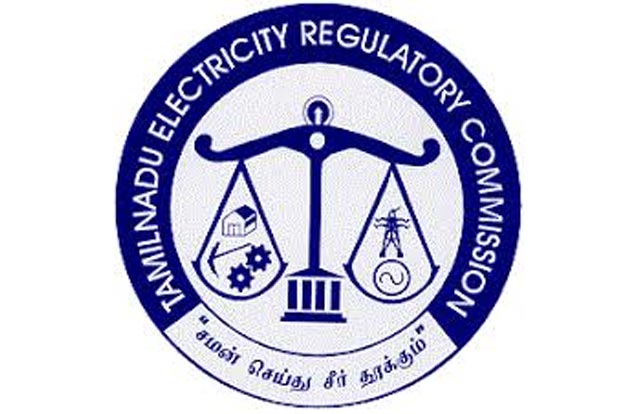 ?>
?>
Tamil Nadu Electricity Supply Code on stipulating harmonic limits, Methodology of measurements, meter standards, penalties etc., to ensure quality of supply to consumers [Draft Amendment]
Highlights -
ã "the limits of injection of current harmonics at the point of common coupling by the user, method of harmonic measurement and other such matters, shall be in accordance with the IEEE Std. 519-2014, as amended, from time to timeã.
ô ã Current distortion/ harmonics are measured at point of common coupling (PCC) in:-
ã Bulk consumers at 33KV and above
CER Opinion -
2. Computation of TDD (Regulation 1 (f)): It may be clarified in the draft regulation that which of the following value(s) should be considered while computing the TDD values at 99th Percentile or 95th percentile at the interval of 3 s/ 10 min:-
ã Average Value
ã Highest Value
ã Value at the beginning/end of the observed time period
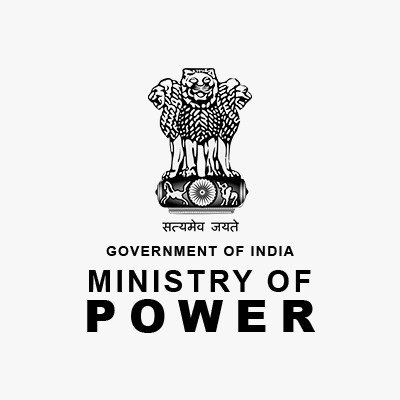 ?>
?>
Discussion Paper on Market Based Economic Dispatch (MBED)

Draft CERC (Ancillary Services) Regulations, 2021
 ?>
?>
Discussion paper on redesigning the Renewable Energy Certificate (REC) Mechanism
Key objectives:
ãô To increase the share of non-fossil fuel based electricity energy to meet the international target of 175 GW by 2022.
ã
The floor and forbearance prices are not required to be specified as
RECs holders would have the complete freedom to decide the timings to
sell
ã CERC may intervene in cases of malpractices observed in the REC trading
ã
The concept of multiplier, negative list and sunset clause can be
introduced for various technologies depending upon their maturity level
With
the RECs having a perpetual validity, the relevance of floor price is
further diminished. Furthermore, compliance penalty for RPO shortfall
(as applicable in respective states, if any) indirectly translates into a
forbearance price (See Singh (2010) for further discussion on the
same).
2.ô ô ô REC as Unified framework for ãGuarantee of Originã:
The REC framework should be expanded as a unified framework for
ãGuarantee of Originã. Non-REC projects do not have a guarantee of
origin certification at present. This currently serves the purpose as
the system operator and the distribution utility can identify the energy
injected through the metering infrastructure. However, there is such
certification to allow this ãgreen energyã to be identified and traded
further in the market. By issuing RECs to all RE projects (including
those under FiT framework, captive as well as merchant RE capacity) in
the country would have following advantages
ã Ensure full visibility of RE energy footprint across the country.
ã Unified ãGuarantee of Originã certification across all RE technologies
ã Enable the obligated entities (Discoms+) to offload, in the form of RECs, excess RE procurement beyond their RPO, particularly that on account of contracts signed under the FiT framework.
ã Develop a retail market for ãgreen electricityã, wherein distribution utilities can sell a ãgreen electricity productã to willing consumers.
 ?>
?>
HPERC (Security Deposit) (Fourth Amendment) Regulations, 2021
 ?>
?>
Proposed Amendments in JERC for the State of Goa & UTs (Electricity Supply Code) Regulations, 2018

Proposed OERC (Procurement of Energy from Renewable Sources and its Compliance) Regulations, 2021
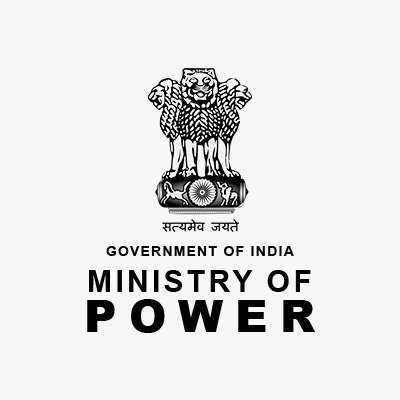 ?>
?>
National Electricity Policy, 2021 (Draft)
 ?>
?>
Electricity (Rights of Consumers) (Amendment) Rules, 2021.
Highlights:
The Ministry of Power prepared and notified on 9thô April, 2021 a draft amendment to the Electricity (Rights of Consumers) Rules, 2021. These rules may be called the Electricity (Rights of Consumers) (Amendment) Rules, 2021.
Key points of the amendment rules are:
- Definitions of ãGross-meteringã, ãNet-meteringã and ãNet-billing or net feed-inã may be added in sub-rule to the Rule 2 of the Electricity (Rights of Consumers) Rules, 2020.
- The Commission may allow net metering to the prosumer for loads up to 500 kW or up to the sanctioned load, whichever is lower and net-billing or net feed-in for other loads.
- Prosumers are incentivized to install energy storage so that stored solar energy can be utilized by them or fed into the grid during peak hours
CER Opinion:
- In the definition of ãGross-meteringã the phrase ãappropriate metering arrangementsã needs to be clarified. Gross metering requires more than one metering arrangement and the above phrase conflicts with the definition of prosumer ãusing same point of supplyã.
- Rule (3) of the Amendment rules may be reconstructed as ããÎ.. for loads up to 500 kW or up to the sanctioned load or contract demand (as the case may be), whichever is lowerãÎ..ã
- Commissions should be replaced with ãAppropriate Commissionã.
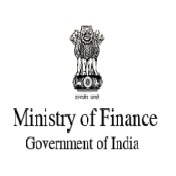 ?>
?>
Implementation of Budget Initiatives for the Power and Renewable Energy Sector
 ?>
?>
Electricity (Change in Law, Must-run status, and other Matters) Rules, 2020
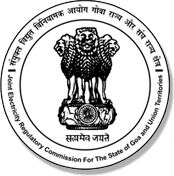 ?>
?>
Draft Joint Electricity Regulatory Commission for the state of Goa and Union Territories (Generation, Transmission and Distribution Multi-year tariff) Regulations, 2021
Highlights -
JERC (Goa & UTs) issued a draft Generation, Transmission and Distribution Multi-year Tariff Regulation, 2021, and will be applicable to the state of Goa and Union Territories. The key highlights of the regulation are given below:
1. Capital Cost:Any gain or loss resulting from a shift in foreign exchange rates for the loan amount up to the date of commercial operation would be offset only against the foreign debt portion of the capital cost.If actual capital cost is less than approved capital cost then actual capital cost shall be considered.
CER Opinionô -
Foreign Debt Component (Regulation 24.1): The first proviso of the Regulation 24.1 (e) may be reworded as ãProvided that any gain or loss on account of foreign exchange rate variation pertaining to the loan amount availed up to the Date of Commercial Operation shall be adjusted only against the foreign debt component of the capital costã.
 ?>
?>
Determination of levellised generic tariff for FY 2021-22 under Regulation 8 of the CERC (Terms and Conditions for Tariff determination from Renewable Energy Sources) Regulations, 2020 [Proposal]
Highlightsô -
CERC has notified a proposal for determination of levellised generic tariff for FY 2021-22 on 18th February, 2021.
These regulations specify the tariff determination for the RE projects (small hydro projects, biomass power projects with Rankine cycle technology, non-fossil fuel-based co-generation projects, biomass gasifier-based power projects and biogas-based power projects) which shall be applicable during the period from 1st April, 2021 till 31st March, 2022.
CER Opinion -
Swiss Challenge for all Cases Involving Project-Specific Tariff: As per current scenario the energy market is mature enough. The solar as well as wind technologies have witnessed a significant competition. The relative success of competitive technologies further encourages the competitiveness in the sector, CERC should leave it to the market forces.
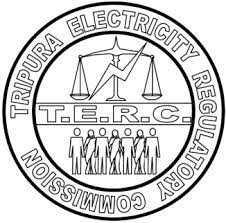 ?>
?>
Tripura Electricity Regulatory Commission (Consumer Prepaid Metering) Regulations, 2021
ã The Regulation will cover new single-phase and three-phase LY Industrial, NDS, mobile towers and temporary connections up to a connected load of 50KW.
(62) "specified" means specified by regulations made by the Appropriate Commission or the Authority, as the case may be, under this Act.
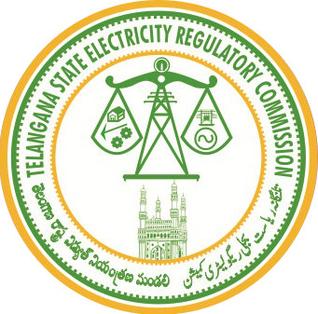 ?>
?>
Telangana State Electricity Regulatory Commission (Deviation Settlement Mechanism and related matters) Regulation, 2020
TSERC notified draft for Deviation Settlement Mechanism (DSM) on 28th December, 2020. This Regulation will come into picture from 1st March, 2021.
Applicability - Itô includesô Buyersô &ô Sellersô engagedô inô conveyanceô relatedô transactionsô of electricityô viaô openô accessô utilisingô intra-stateô transmissionô systemô (In-STS)ô and/orô distribution system of electricity (including inter-state wheeling of power).
CER Opinion -
ã Need for an objective definition of ãgamingã (Regulation 2.1(p)): The objective definition of ãgamingã should clearly identify the basis for assessing ãintentional mis-declarationã of the schedule. As an alternative, tightening of the deviation limit during the peak hours (when DSM prices are expected to be higher) can also reduce the incentive for gaming through over injection by the generators/under-drawl by the buyers.
 ?>
?>
RERC (Terms and Conditions for Tariff determination from Renewable Energy Sources) Regulations, 2020
 ?>
?>
CERC Terms and Conditions for Tariff determination from Renewable Energy Sources (RES) Regulation, 2020
 ?>
?>
Electricity Act, 2003 Amendment 2020 [Draft]
 ?>
?>
MNRE: Draft Guidelines for Implementation od Off-Grid Solar Power Plants in RESCO model under MNRE Programme
 ?>
?>
WBERCãs Draft for Amendment to Cogeneration and Generation of Electricity from Renewable Sources of Energy Regulations
Highlights -
The WBERC notified draft for the amendment to Cogeneration and Generation of Electricity from Renewable Sources of Energy Regulations, 2013. Highlights are below:
1. Consumer can install rooftop system of 1 kW or above capacity (up to total sanctioned load or contract demand) can claim net-metering/net-billing benefits.
2. DISCOMs are proposed to procure 100% of energy from waste to energy plants in their respective areas.
3. Unmet solar RPO obligation above the 85% of total RPO can be met by non-solar energy, and vice-versa.
CER Opinion -
1. RPO trajectory for the state should be specified in advance so as to provide opportunity to obligated entities to make appropriate investments or plan to procure RE/REC.
2. In case the tariff for RE has been discovered under section 63 of EA, 2003 and has been adopted by the commission, the same should not be subjected to the price cap under regulation 6.0.
3. An RPO compliance framework, supported with penalty in proportion to the shortfall, would help ensure that obligated entities take adequate steps to meet their RPO target including through purchase of RECs.
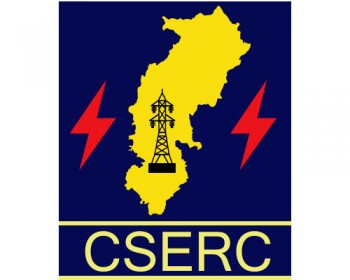 ?>
?>
CSERC Standard of Performance (SoP) in Distribution of Electricity Regulation, 2020
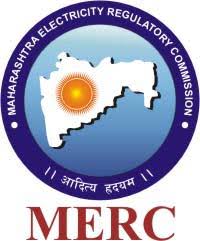 ?>
?>
MERCãs Draft for State Grid Code Regulations, 2020
Highlights -
MERC released draft State Grid Code Regulations (MEGC, 2020) on 1st Mar 2020. MEGC, 2020 is applicable to all generators in the state connected to intra-state transmission system (InSTS), transmission licensee in the state including STU, Maharashtra SLDC, distribution licensees including deemed distribution licensees, Indian Railways, OA consumers and EHV consumers connected to InSTS. Major highlights of the proposed regulations are below:
1. STU is to explore and evaluate alternate options if capital expenditure for any new transmission system exceeds threshold limit of ã¿100 crore or as declared by the Commission from time to time.
2. SLDC need to maintain the spinning reserve margin equivalent to 3% of the system peak demand and 3% of installed capacity for the generators to manage ramp up.
3. The generating company can de-rate the capacity or can go for repeat trial run. The demonstrated capacity, in case of derating, will be equal to or greater than 105% of de-rated capacity for thermal InSGS and 110% for hydro generating station.
CER Opinion:
1. The investment approval framework should include a cost-benefit analysis considering economic efficacy of the investment and the system security over medium to long-term. Excess investment towards reliable of power supply needs to be controlled to avoid burden on consumers.
2. Clause 30.6 requires 'instantaneous' picking up of the generation to 105/110% in case of ãsudden fall in system frequencyã, which should be specified.
3. Framework for procurement and payment for spinning reserve capacity margin and its recovery from system participation (specially load serving entities) should be specified.
 ?>
?>
CERC's Proposal for Determination of Forbearance Price and Floor Price for the REC Framework
Central Electricity Regulatory Commission (CERC), via notification dated 31st Mar 2020, proposed to adopt forbearance price and floor price of Renewable Energy Certificates (REC) as given in the table:
Details |
Solar REC (ã¿/MWh) |
Non-Solar REC (ã¿/MWh) |
Forbearance Price |
1,000 |
1,000 |
Floor Price |
0 |
0 |
CER Opinion:
1. As the proposed REC floor price for solar/non-solar RECs is zero, reference to floor price as a part of REC framework under the principle REC Regulations can be deleted.
2. Given that SERCs are allowing excess solar (non-solar) RPO quantum to be adjusted against non-solar (solar) RPO, fungibility between solar and non-solar RECs is clearly visible and should be institutionalized.
 ?>
?>
HERC: Guidelines for certifying or refusing to certify non-availability to Transmission/Distribution system or Unscheduled Load Shedding
Highlights -
HERC drafted guidelines for certifying or refusing to certify non-availability to transmission or distribution system for OA consumers. Major highlights of the proposed regulations are below:
1. Surplus capacity to be offered to LTOA, MTOA, and STOA in respective order. In case of system enhancement, the applicant will pay the Distribution Capacity cost for grant of LTOA.
2. Consumers capacities of 10 MW and above will be eligible for connectivity at 33 kV or above, rest at below 33 kV.
3. In case of unnotified outage on account of transmission/distribution system, the licensee will compensate the OA consumer the charges payable by consumer to the generating company or the lowest tariff applicable to the consumer category, whichever will be lower.
CER Opinion:
1. To discourage withholding and to bring competitiveness in allocation of unused transmission/distribution capacity, the unused transmission capacity should automatically be released to the SLDC.
2. In case of refusal of OA application, SLDC should provide alternate slots/lower capacity or a timeline for available capacity in future.
3. In case of failure of power evacuation and compensation for wheeling and transmission charges, a mechanism to pass on the benefit to the buyer should be introduced.
 ?>
?>
CEA proposes amendment to Furnishing of Statistics, Returns and Information Regulations, 2007
Highlights -
The Central Electricity Authority (CEA) has proposed amendment to Furnishing of Statistics, Returns and Information Regulations, 2007. The CEA proposes to add four new formats (Format 21A, Format 21B, Format 66 and Format 67) for furnishing of the information in the Regulations.
CER Opinion:
1. Scope for format 21A and 21B should be defined in such a manner that the two tables are mutually exclusive. As per given definition, there would be common CPPs whose data would be reported in both tables.
2. In the format 21A, unit of Electricity Demand should be MVA instead of MW as industrial contract demand is considered in MVA
3. ãVariable chargesã may be used in place of ãfuel chargesã in column 16 of the format 66.
 ?>
?>
POSOCO's "Draft Procedure for Collective Transactions through Real Time Market (RTM)"
POSOCO released draft procedure for scheduling collective transactions in RTM. The draft addresses issues related to processing of application, treatment of losses, congestion management, and revision of schedule, etc. Major highlights are below:
1. Proposal for allocation of transmission corridor to exchanges based on ratio of their shares in the cleared volume in DAM, subject to minimum 10% for exchange having smaller share.ô ô
2. It is proposed that the exchange should submit scheduling request to the NLDC 3 time blocks ahead for delivery of the power.
3. Proposal for the SLDCs to schedule transactions for state utilities/intra-state entities, given the exchange should send detailed breakup of each point of injection and drawl to respective SLDCs two time blocks ahead of delivery time.
4. In case of transmission constraints or threat to grid security, short term transaction to be curtailed first, followed by medium and long-term.
CER Opinion:
1. POSOCO should evaluate the impact of the allocation scheme and identify the pattern of underutilization of allocated transmission capacity and seek suggestions to address the same.
2. More clarification is required for cases where a beneficiary/generator can trade in RTM for the ãsameã capacity, a single standing clearance, if required, would suffice.
3. If
the respective ERC order for intrastate transmission charges or the SLDC system
operating charges is not available, the procedure specifies such charges to be
applicable. Legal aspects of such a ãdeterminationã should be reviewed to avoid
any issues later.
 ?>
?>
GERC's "Tariff Framework for Procurement of Power by Distribution Licensees and Others from Solar Energy Projects and Other Commercial Issues for the State of Gujarat"
Summary -
The GERC notified discussion
paper for tariff framework concerning procurement of solar power by DISCOMs and
other stakeholders. The discussion paper proposes competitive bidding for all
solar projects, including small projects of 5 MW or less capacity. A brief
summary is below:
ô
1. For projects below 5 MW
capacity, proposal to determine tariff through competitive bidding in different
time period of 6 months of the year.
2. Proposes a maximum allowed capacity at 50% of
contracted load for captive use, third party sale, and projects under national
solar mission.
3. Wheeling and cross subsidy
charges between 50% to 100% as applicable to normal OA consumers, are proposed for different
category of projects.
ô
CER
Opinion
1. Linking tariff determination
of small project (below 5 MW) with larger projects is a positive step, but the
commission should also consider the significant diseconomies of scale for
smaller projects while finalizing tariff.
2. We suggest that the basis for
linking of tariff for small project can be pegged at a rate bit higher than the
prevailing mark-up.
3. A large number of small scale
projects can be bundled together to form a competitive market for smaller PV
projects and offering them for bidding. This can address issues related to
economies of scale.ô ô
 ?>
?>
TNERC's "Consultative Paper for Procurement of Solar and Wind Power by Distribution Licensee and Related Issues"
 ?>
?>
APERC's "2nd Draft Amendment to Open Access Regulation"
Recent Discussions
Related Blogs
-
CERC (Power Market) (First Amendment) Regulations, 2025
15 October 2025
Total Posts: 2 Post By: CER TEAM -
HPERC (Deviation Settlement Mechanism and Related Matters) (Second Amendment) Regulations, 2025 [Draft]
15 October 2025
Total Posts: 1 Post By: CER TEAM -
Renewable Consumption Obligation (RCO) Under the Energy Conservation Act, 2001
28 August 2025
Total Posts: 1 Post By: CER TEAM -
Energy Conservation (Compliance Enforcement) Rules, 2025
28 August 2025
Total Posts: 1 Post By: CER TEAM -
CEA: ãAlternative Mechanism for implementation of FPPAS under of the Electricity (Amendment) Rules, 2022.ã
06 August 2025
Total Posts: 1 Post By: CER TEAM -
KSERC (Renewable Energy and Related Matters) Regulations 2025
06 August 2025
Total Posts: 1 Post By: CER TEAM -
Amendments to the Guidelines for Tariff Based Competitive Bidding Process for Procurement of Power from Grid Connected Wind Solar Hybrid Project, 2025
16 July 2025
Total Posts: 1 Post By: CER TEAM -
CERC (Virtual Power Purchase Agreements (VPPAs)) Guidelines, 2025
10 July 2025
Total Posts: 1 Post By: CER TEAM -
ARR and Tariff Determination for DISCOMs - A case study
12 June 2025
Total Posts: 1 Post By: VIKRANT VISHAL -
Grid-India (Suggestions on Increasing the Frequency of REC Auction Sessions at Power Exchanges)
11 June 2025
Total Posts: 1 Post By: CER TEAM -
Ministry of Coal (Public Consultation on Coal Trade Exchange)
11 June 2025
Total Posts: 1 Post By: CER TEAM -
Draft amendments proposed in the MBDs for Procurement of Power for Long term from Thermal Power Stations set up on DBFOO basis -Reg.
11 June 2025
Total Posts: 1 Post By: CER TEAM -
TNERC (Renewable Energy Purchase Obligation) (Amendment) Regulation, 2025
11 June 2025
Total Posts: 1 Post By: CER TEAM -
Tariff Determinaton for Generators
10 June 2025
Total Posts: 4 Post By: Anuj Kumar -
Introduction to CER
07 June 2025
Total Posts: 2 Post By: VVSK CHAKRAVARTHI


